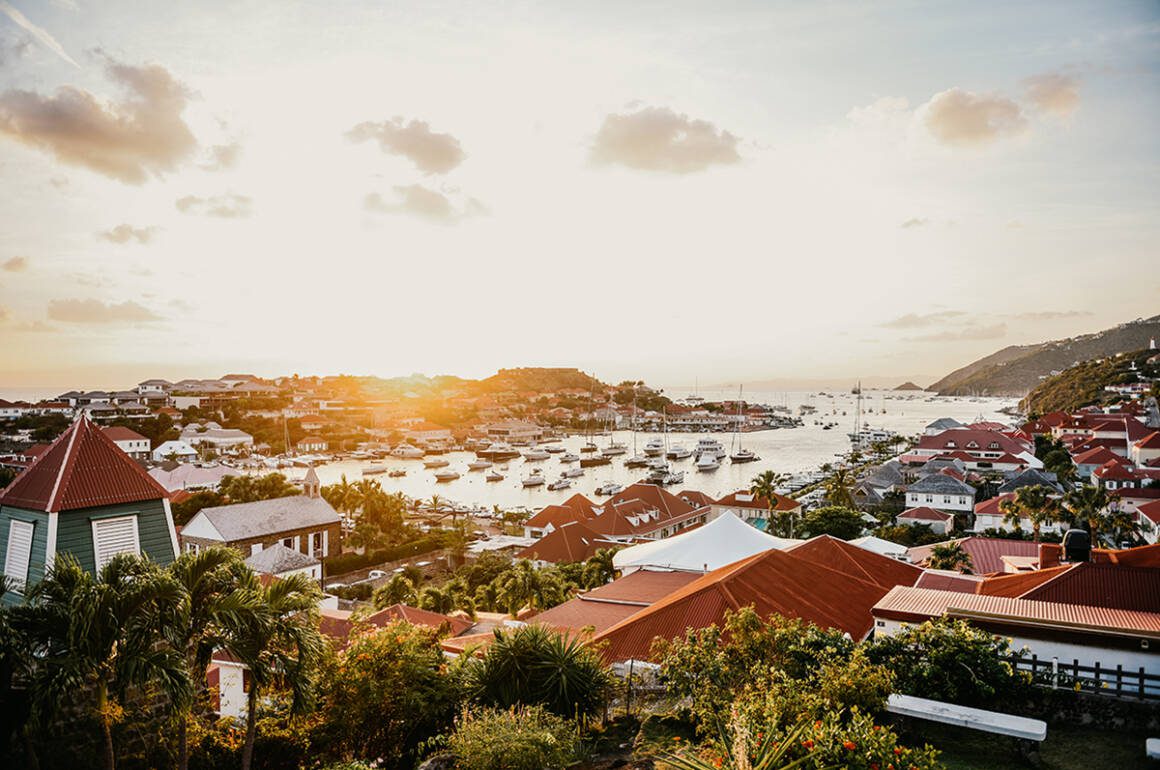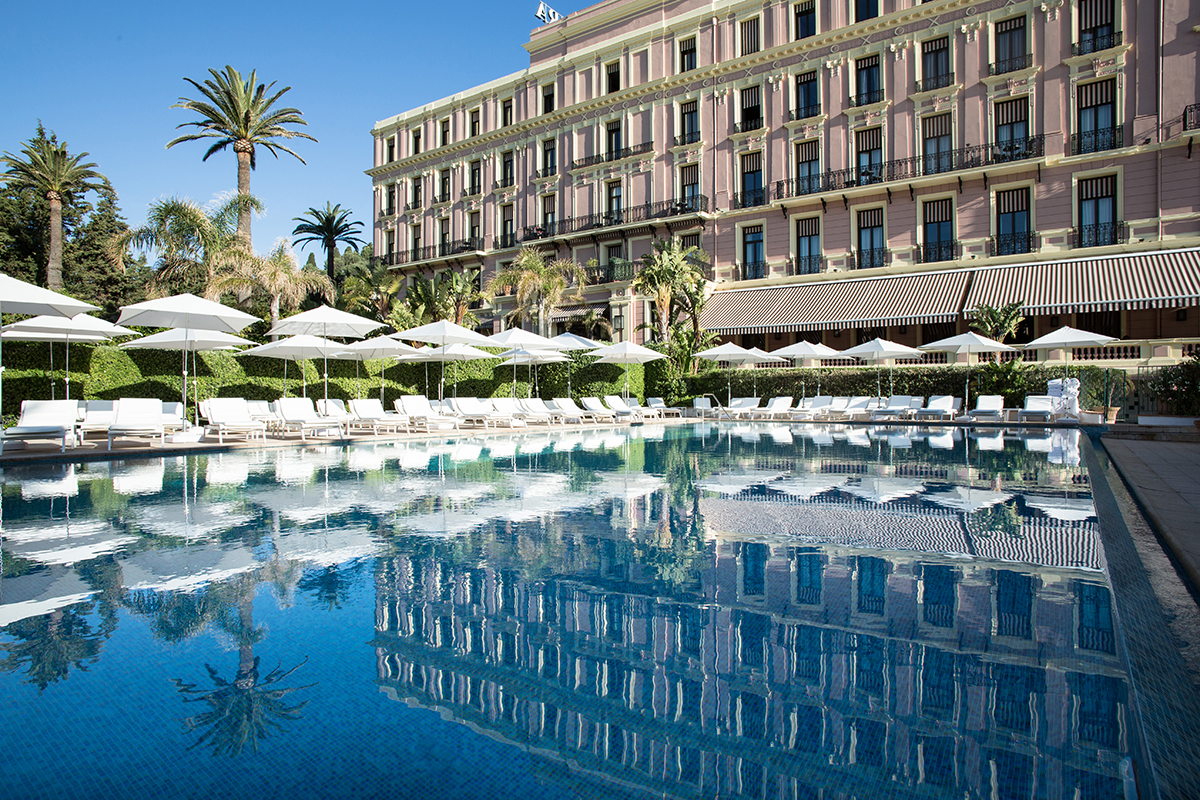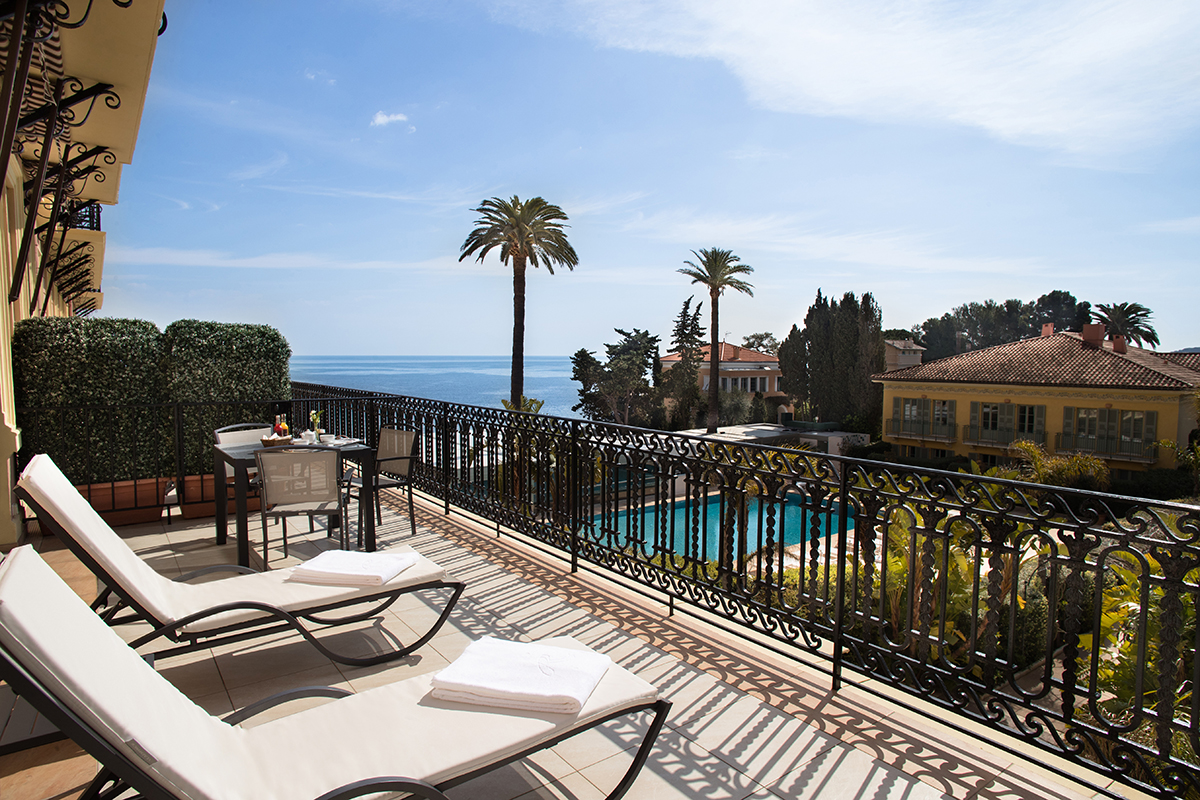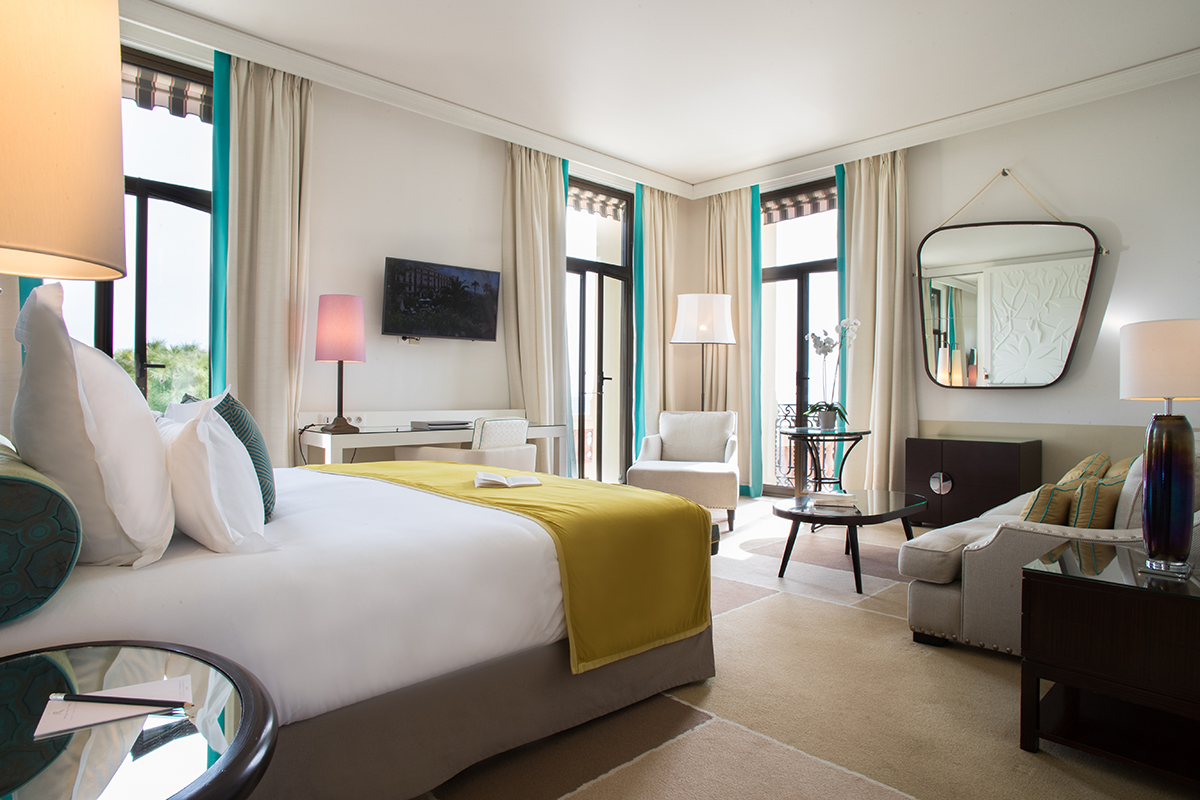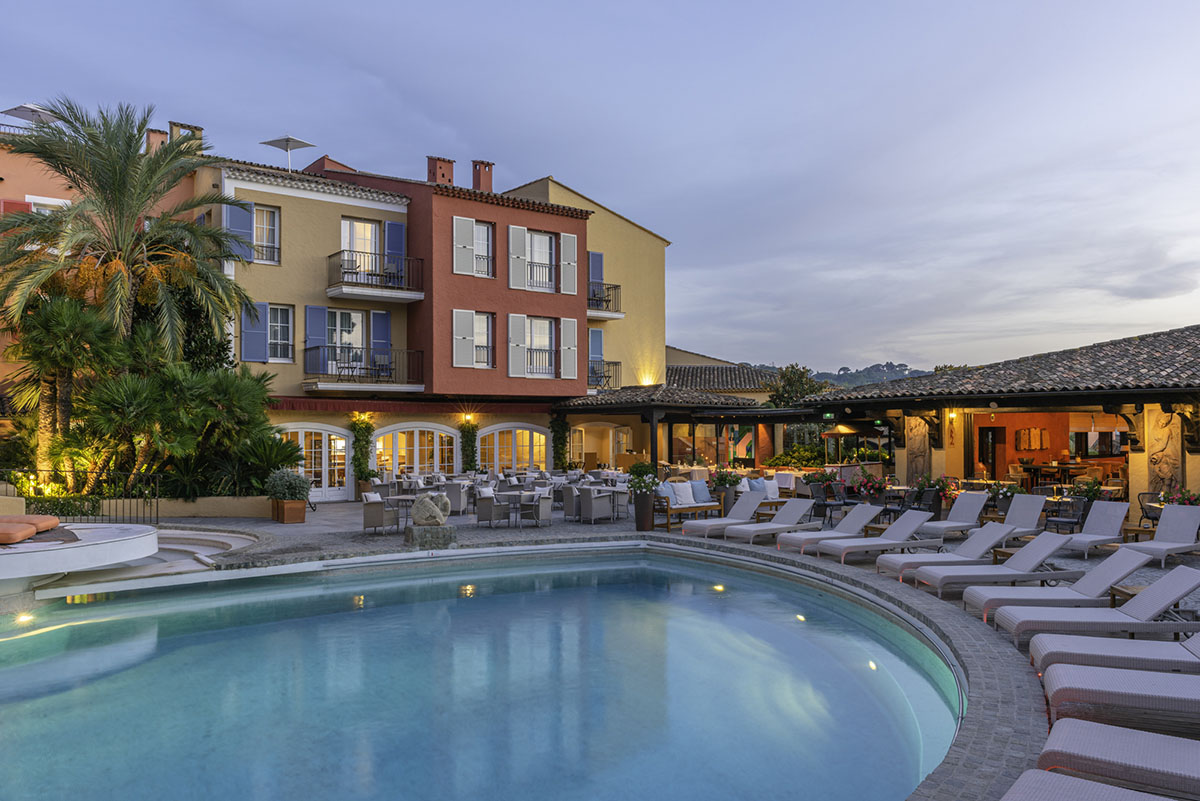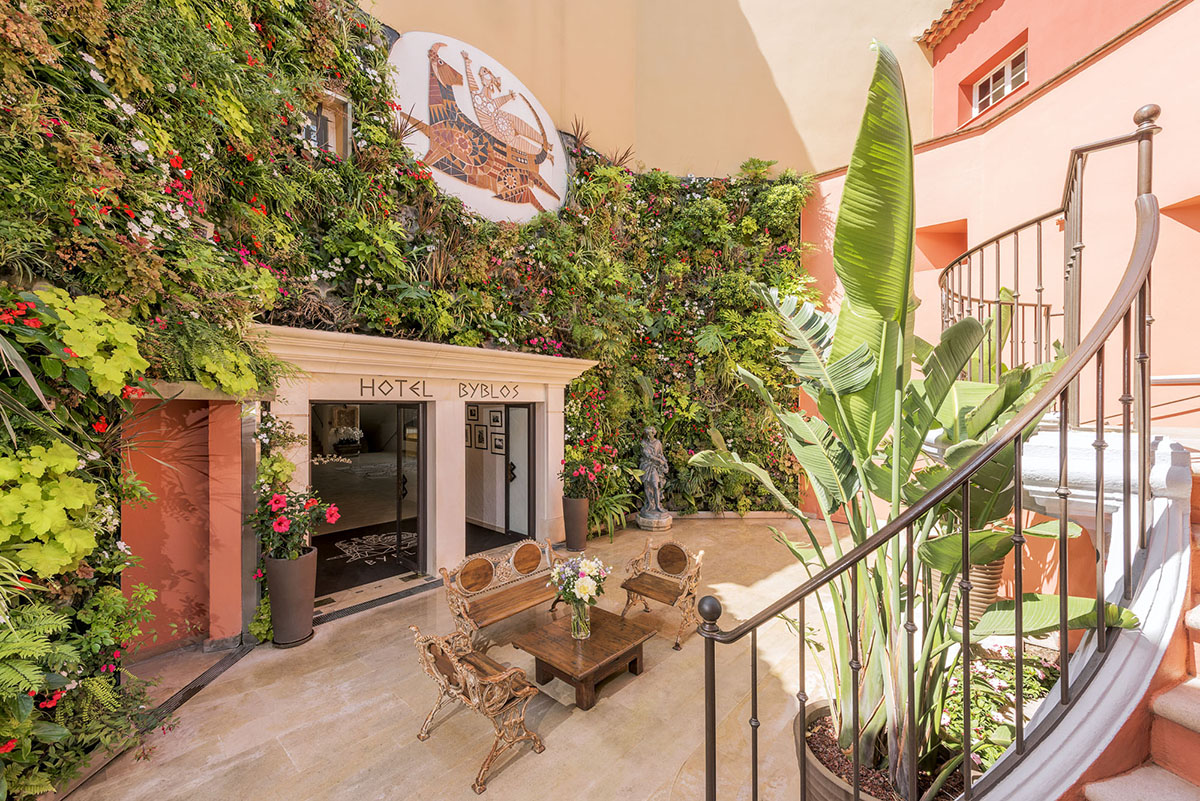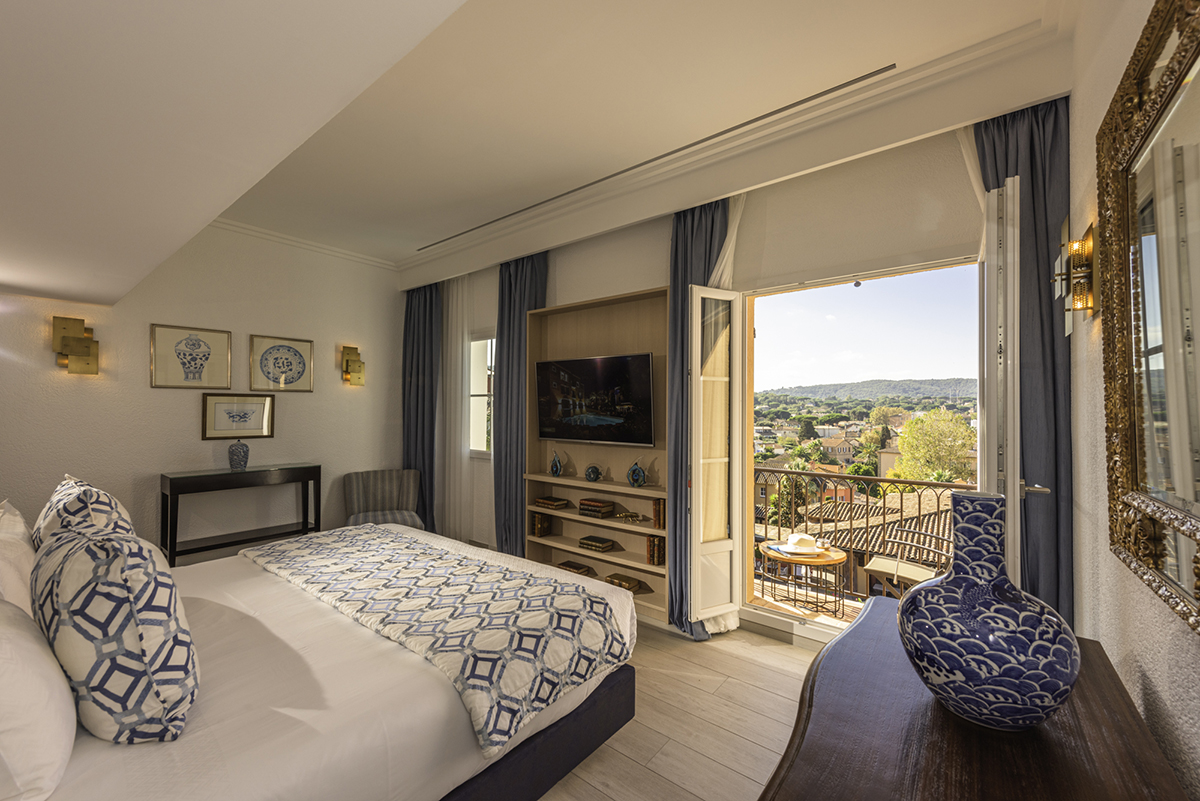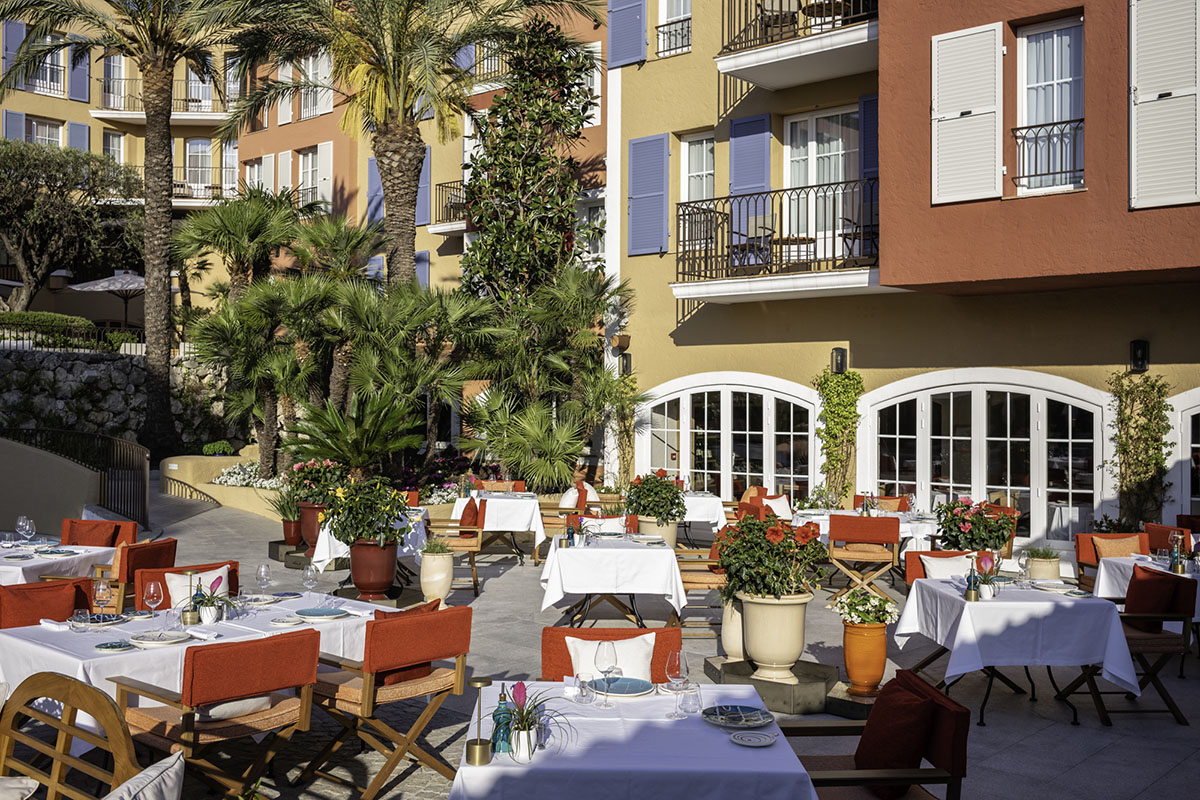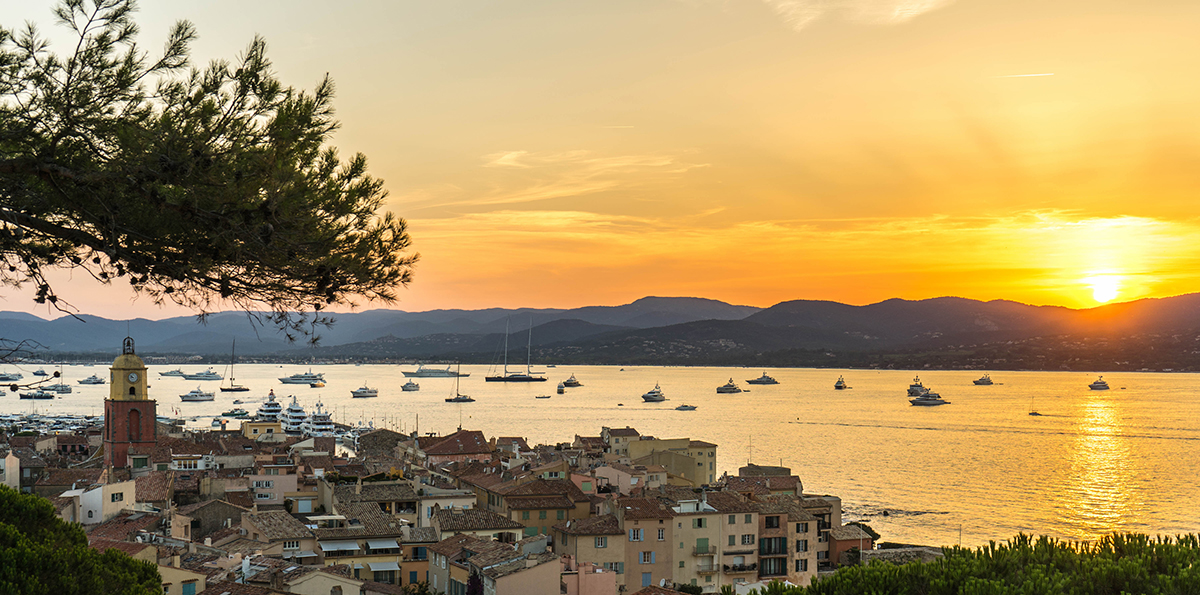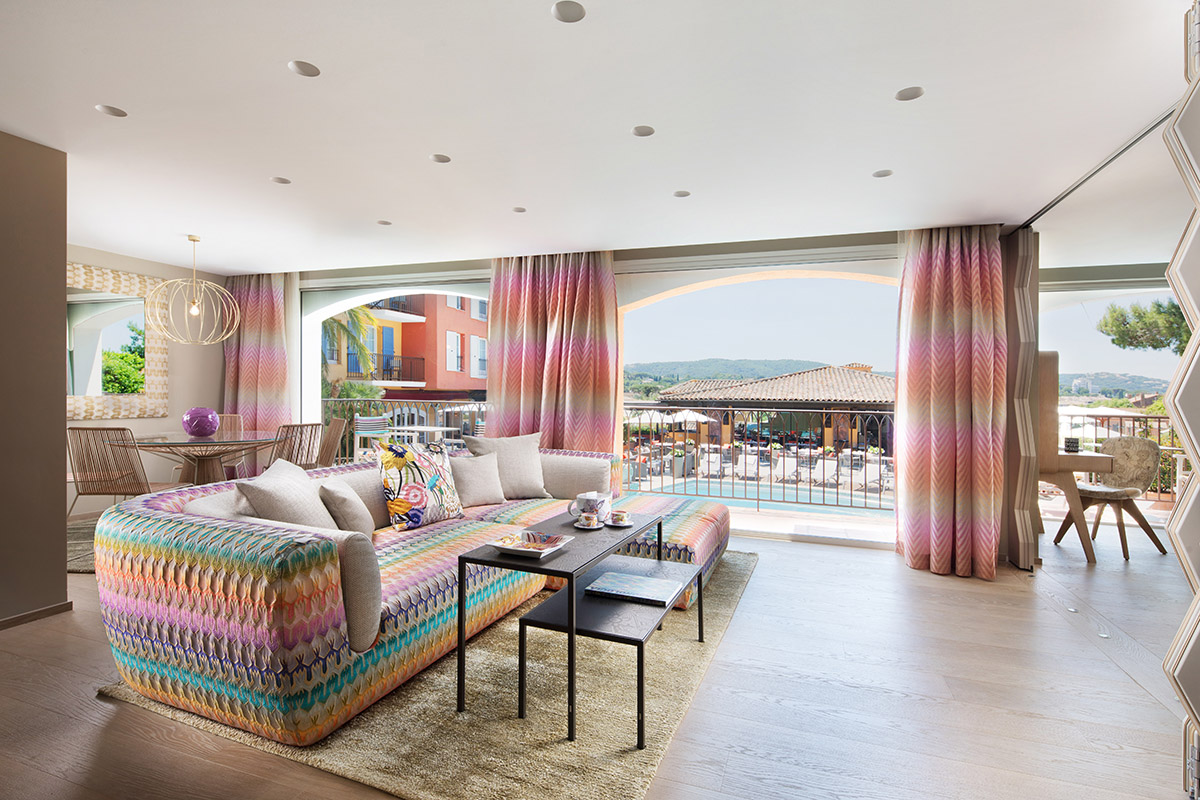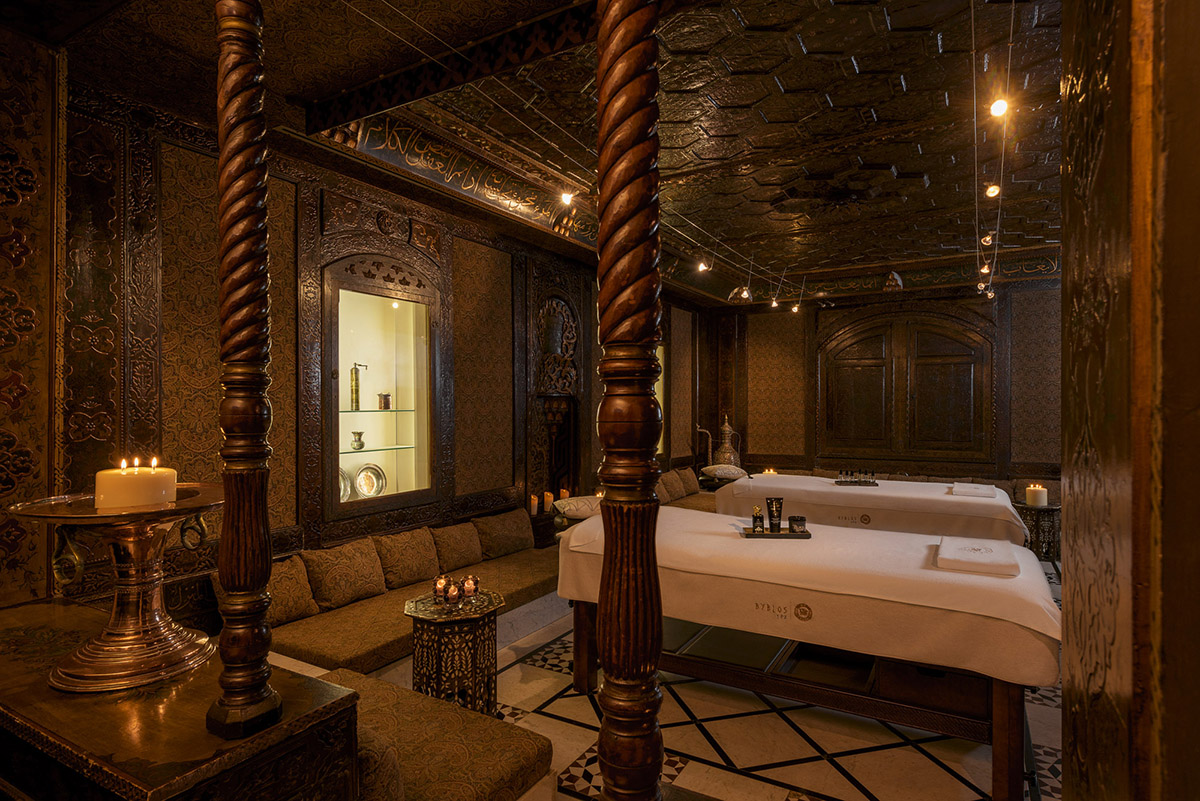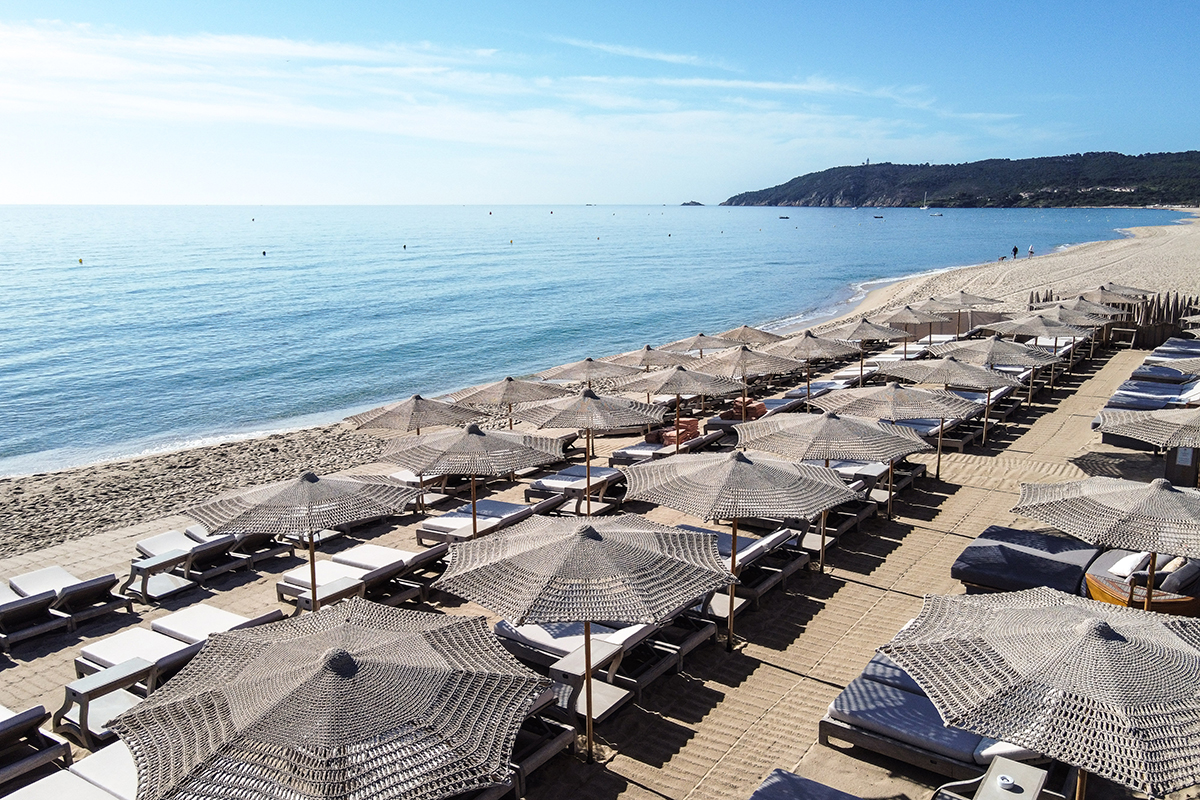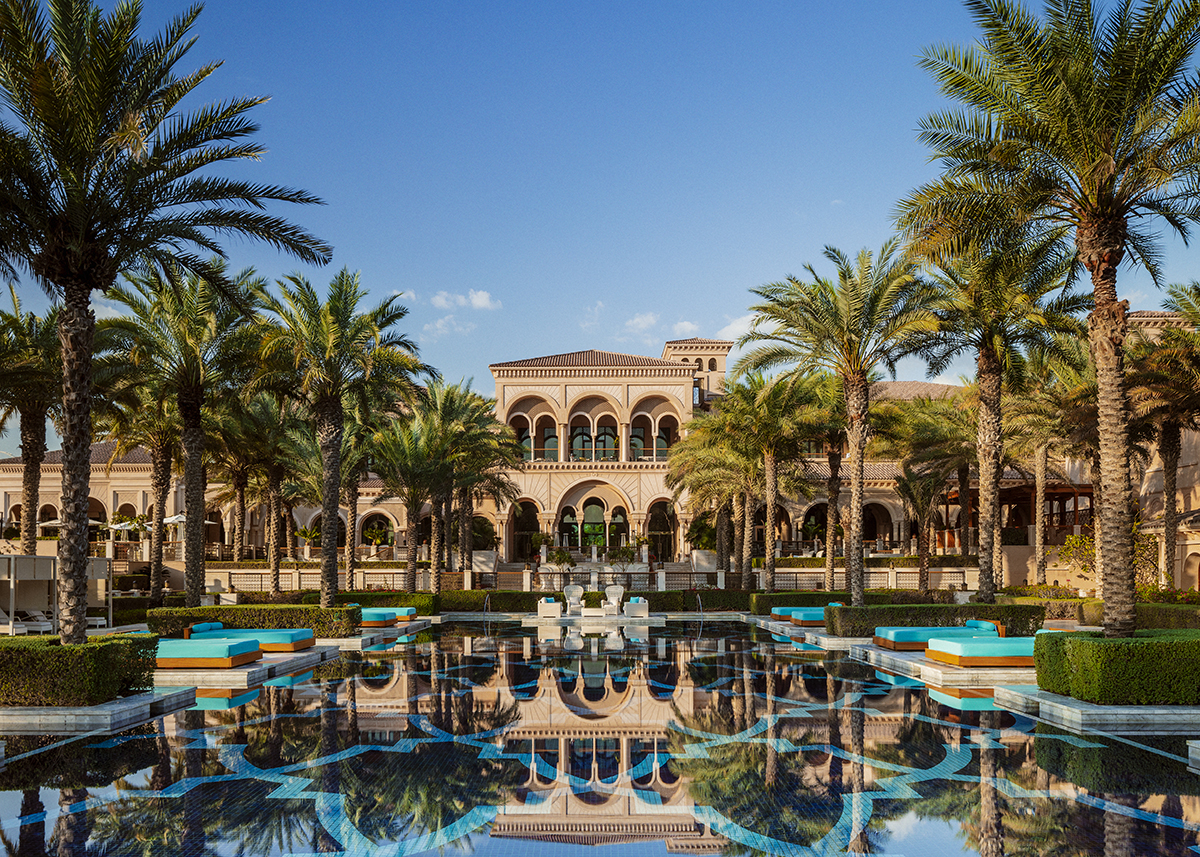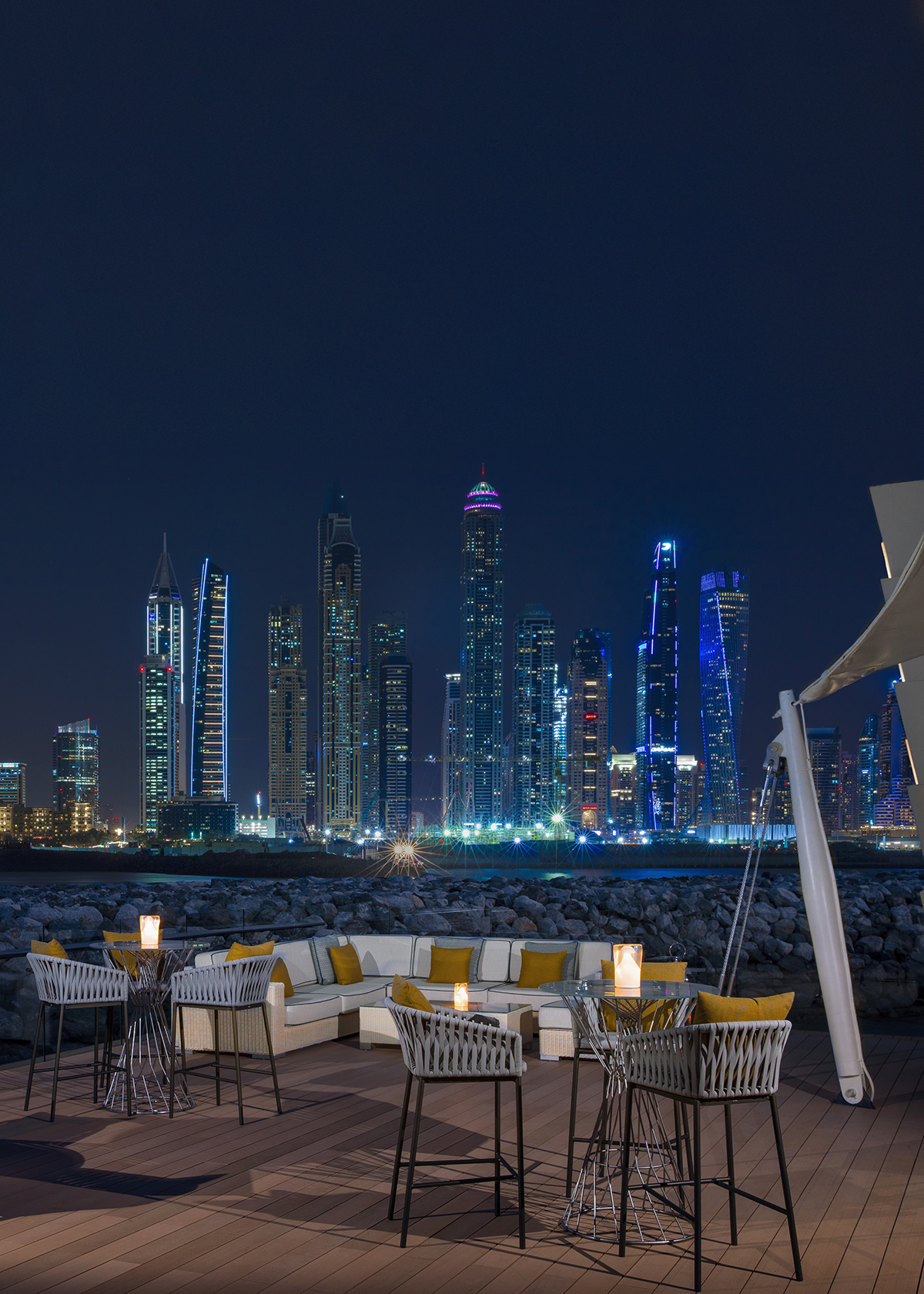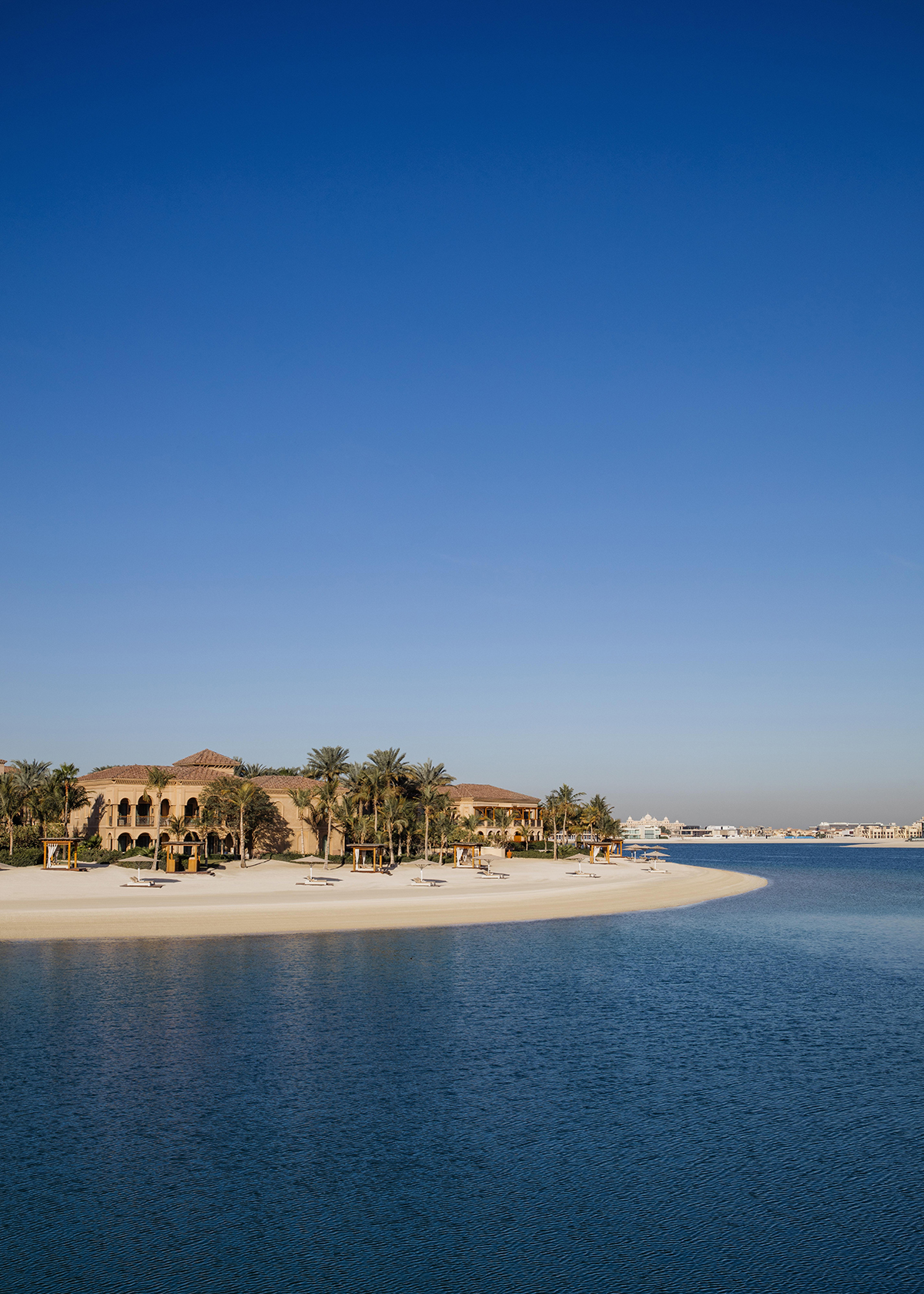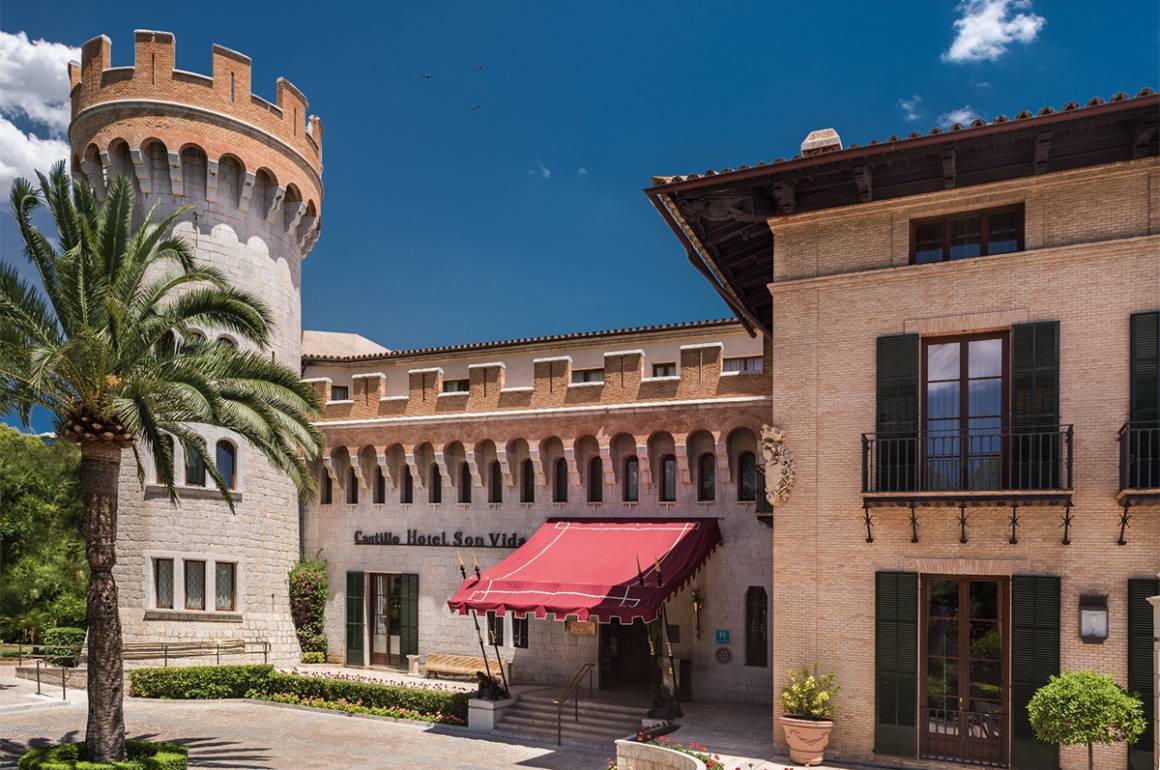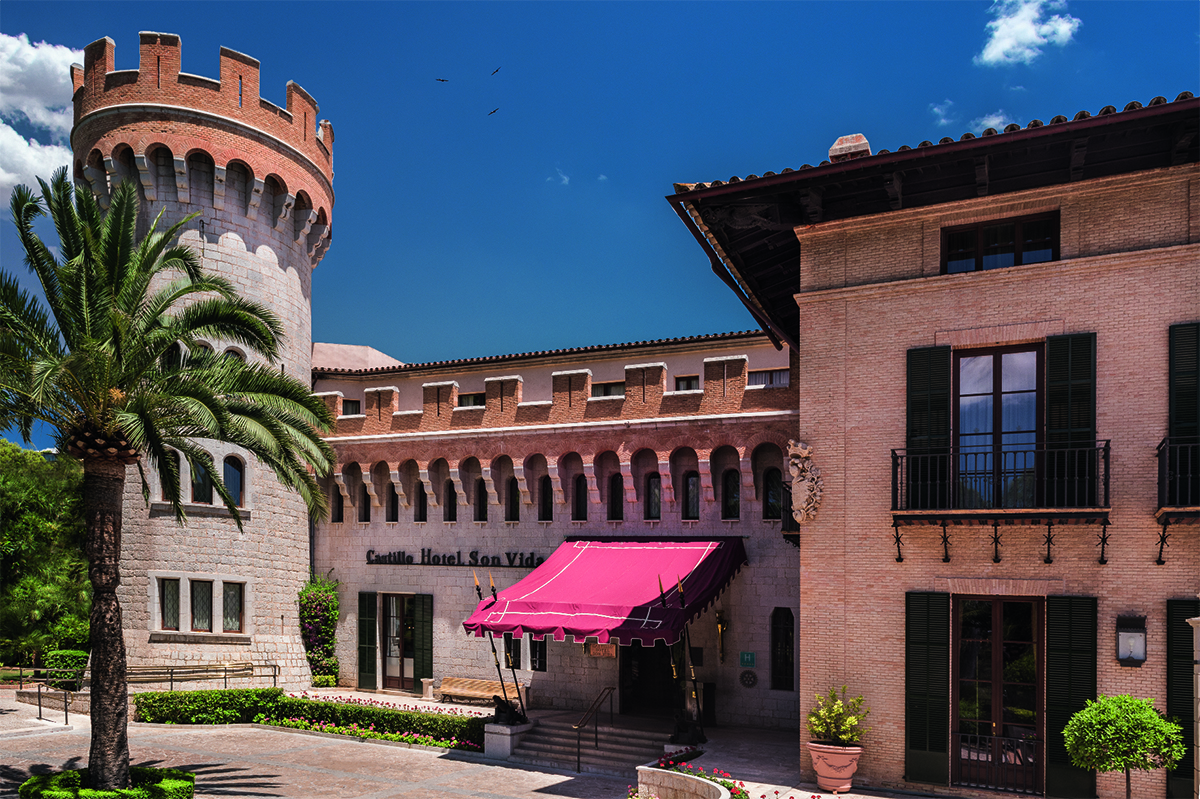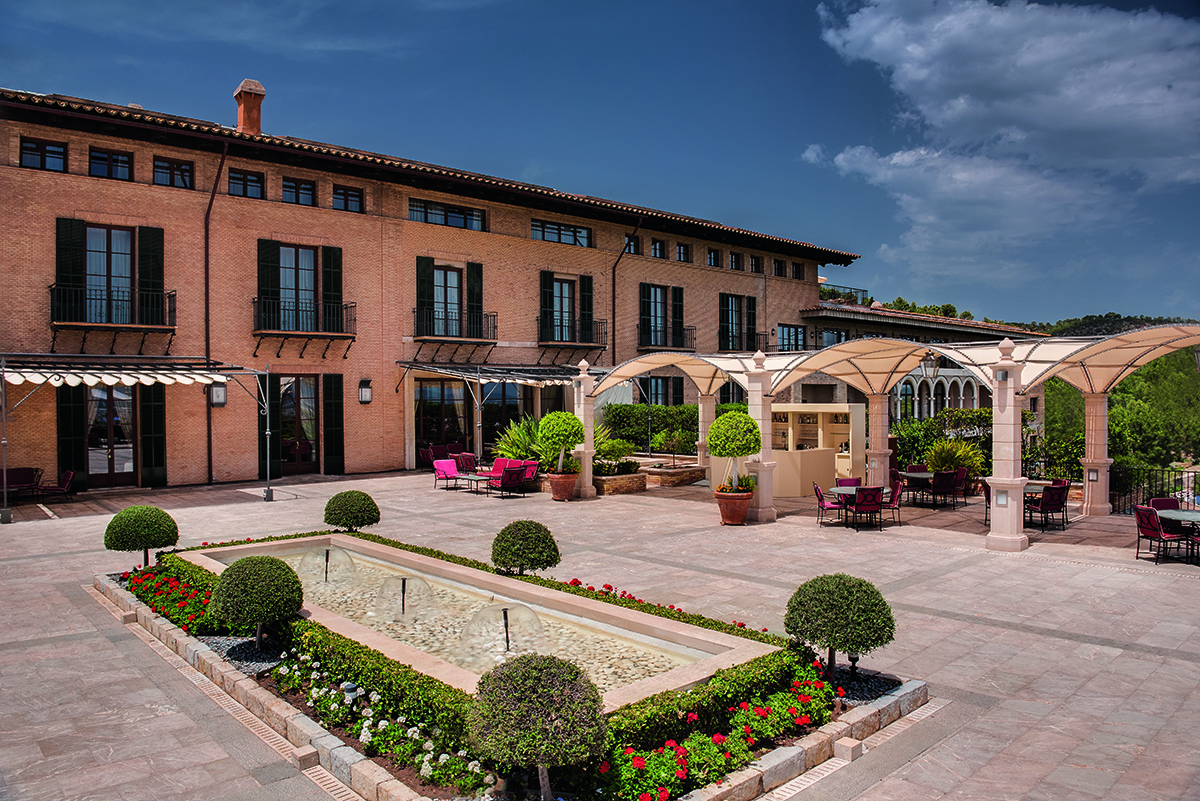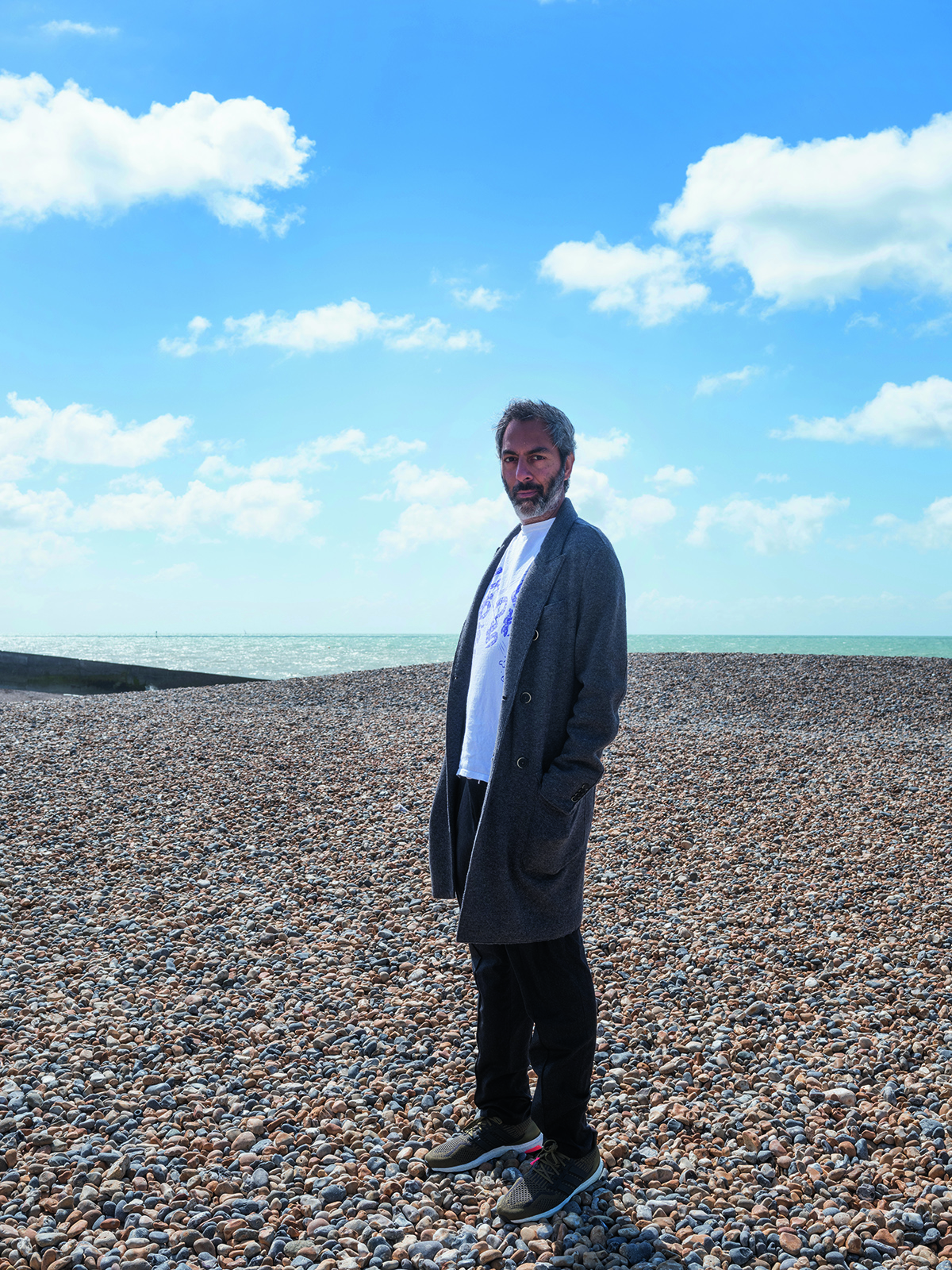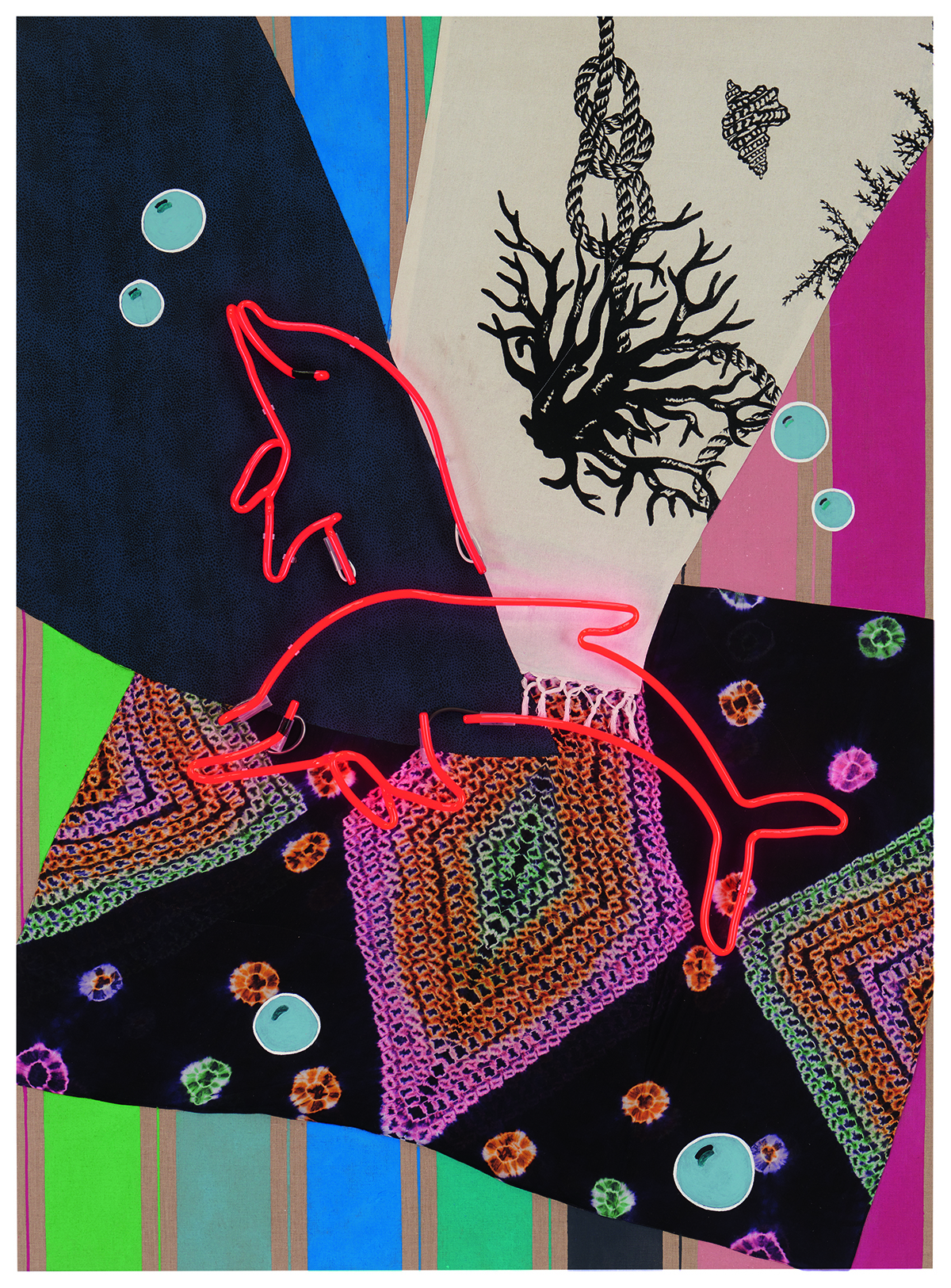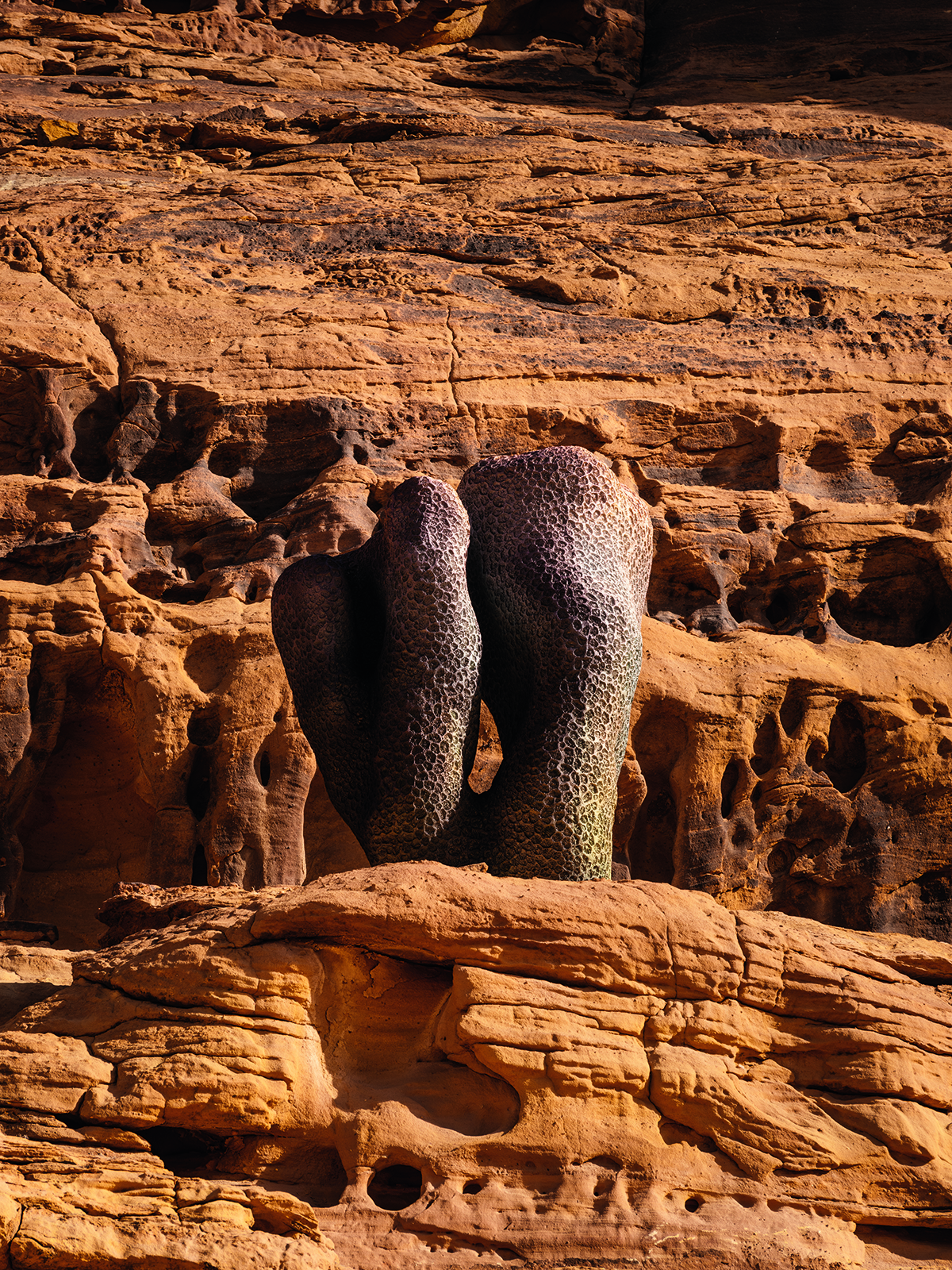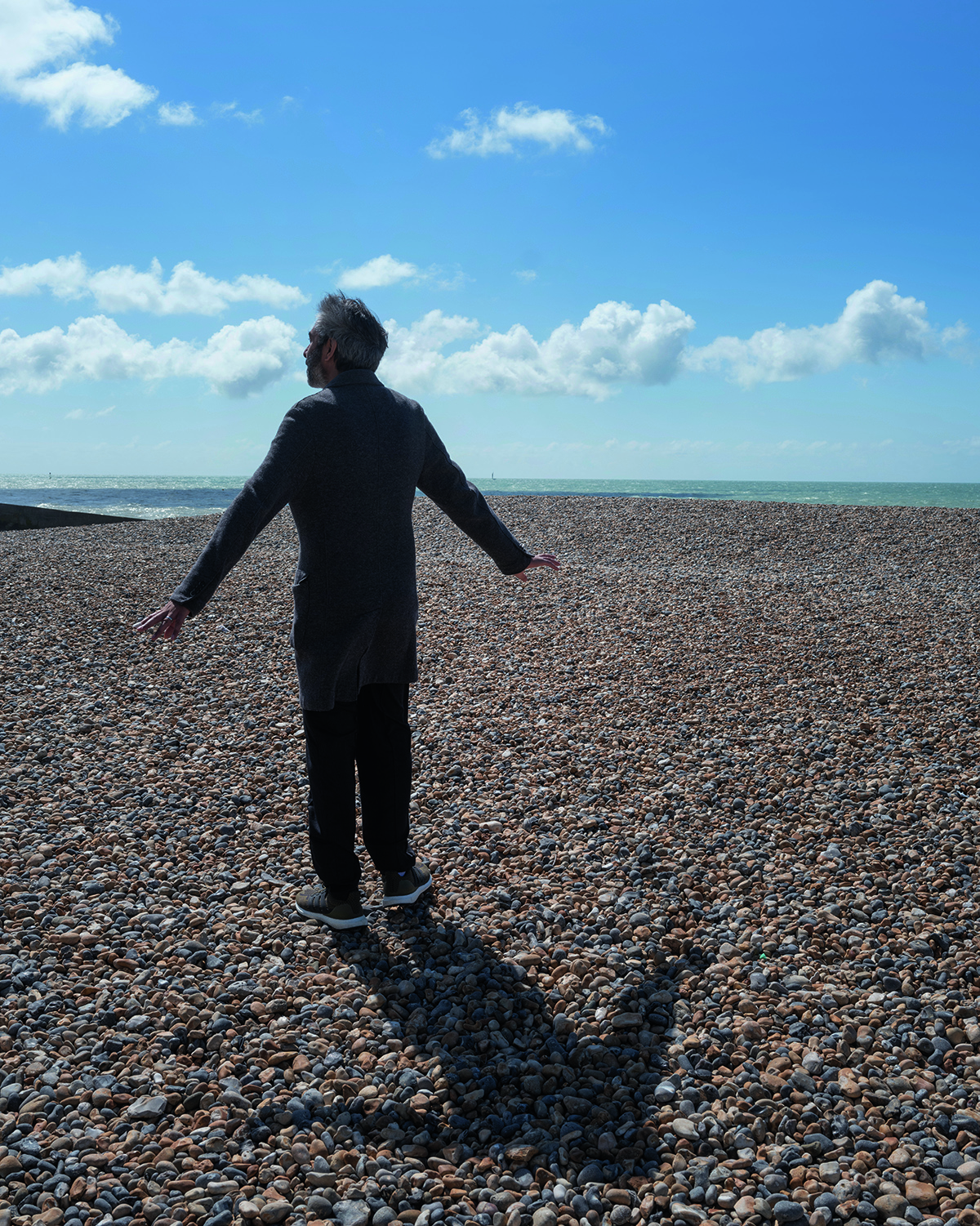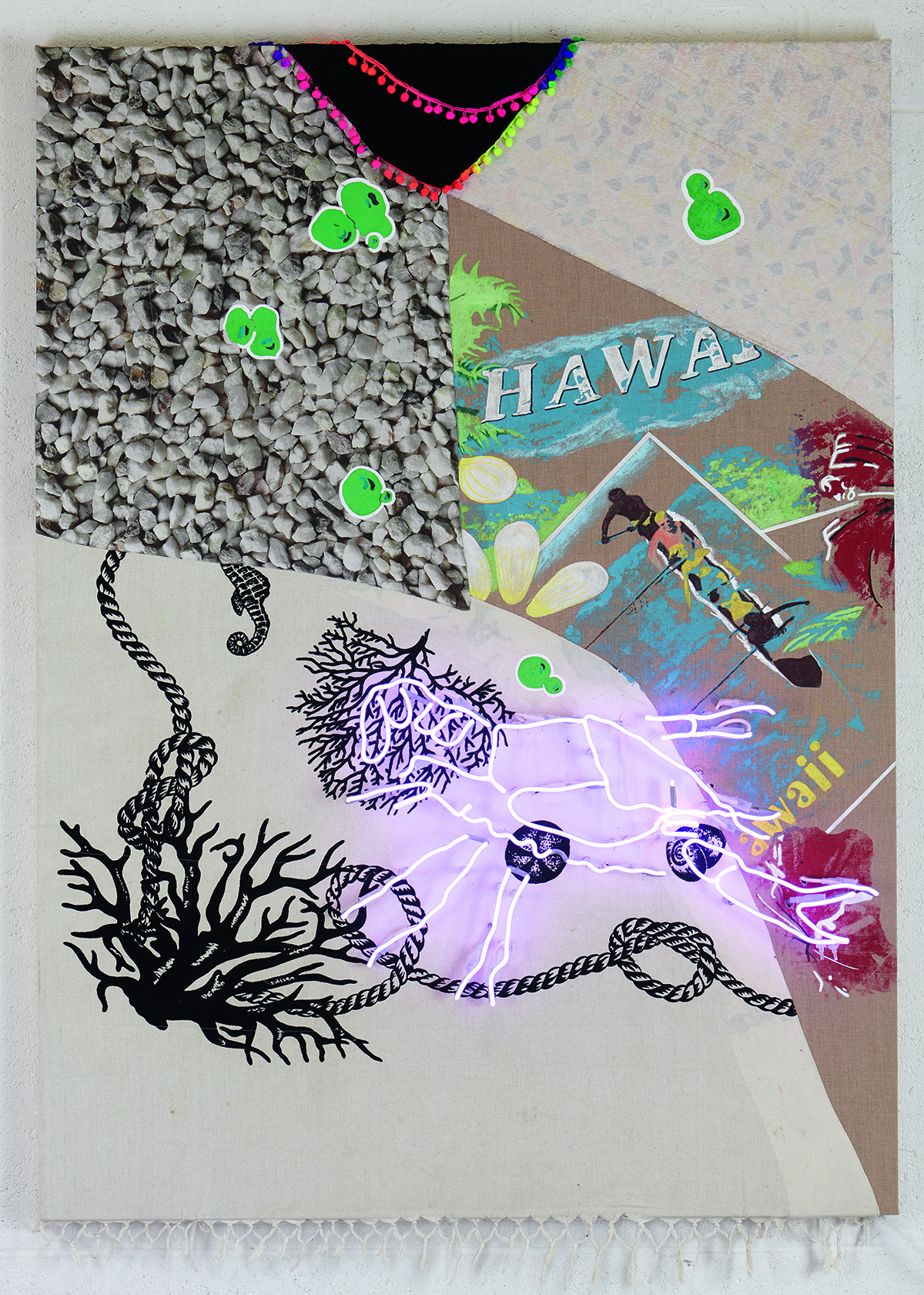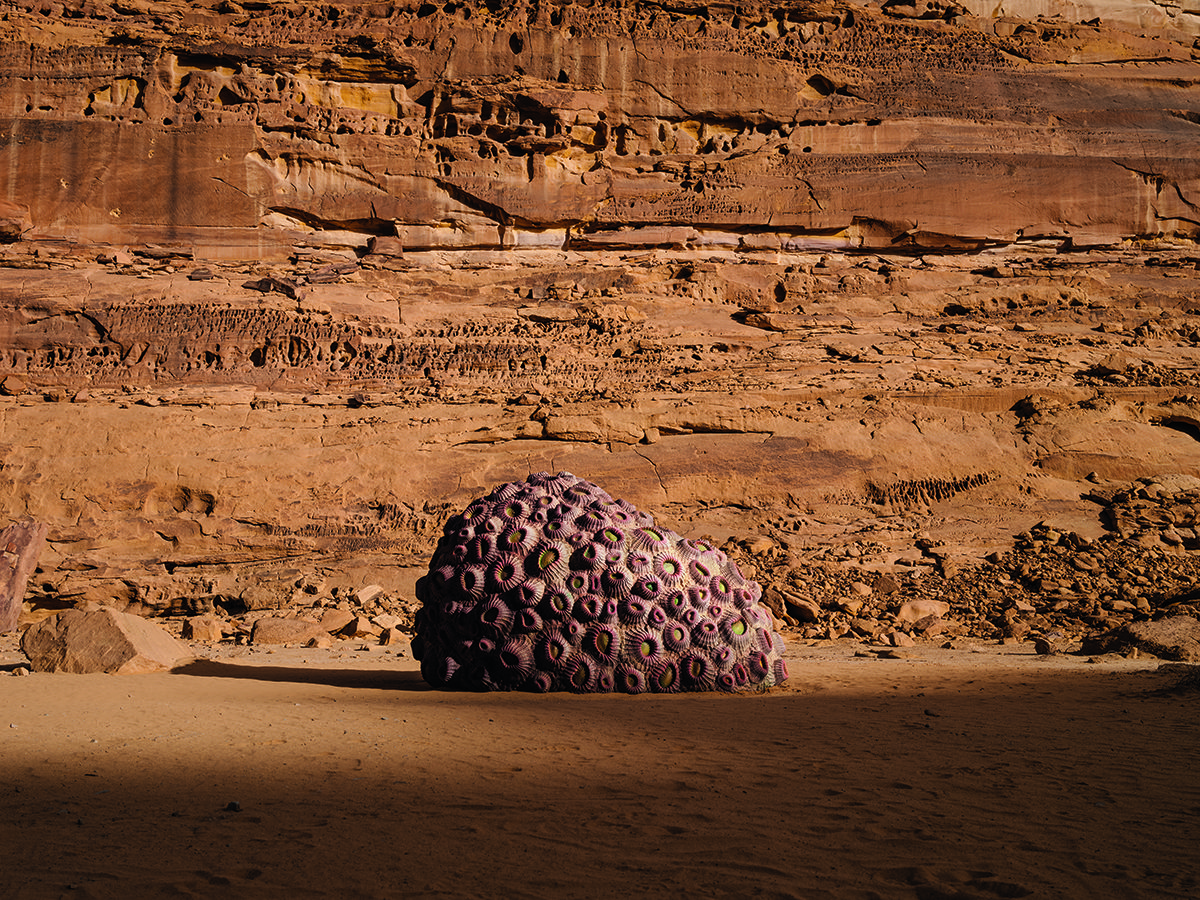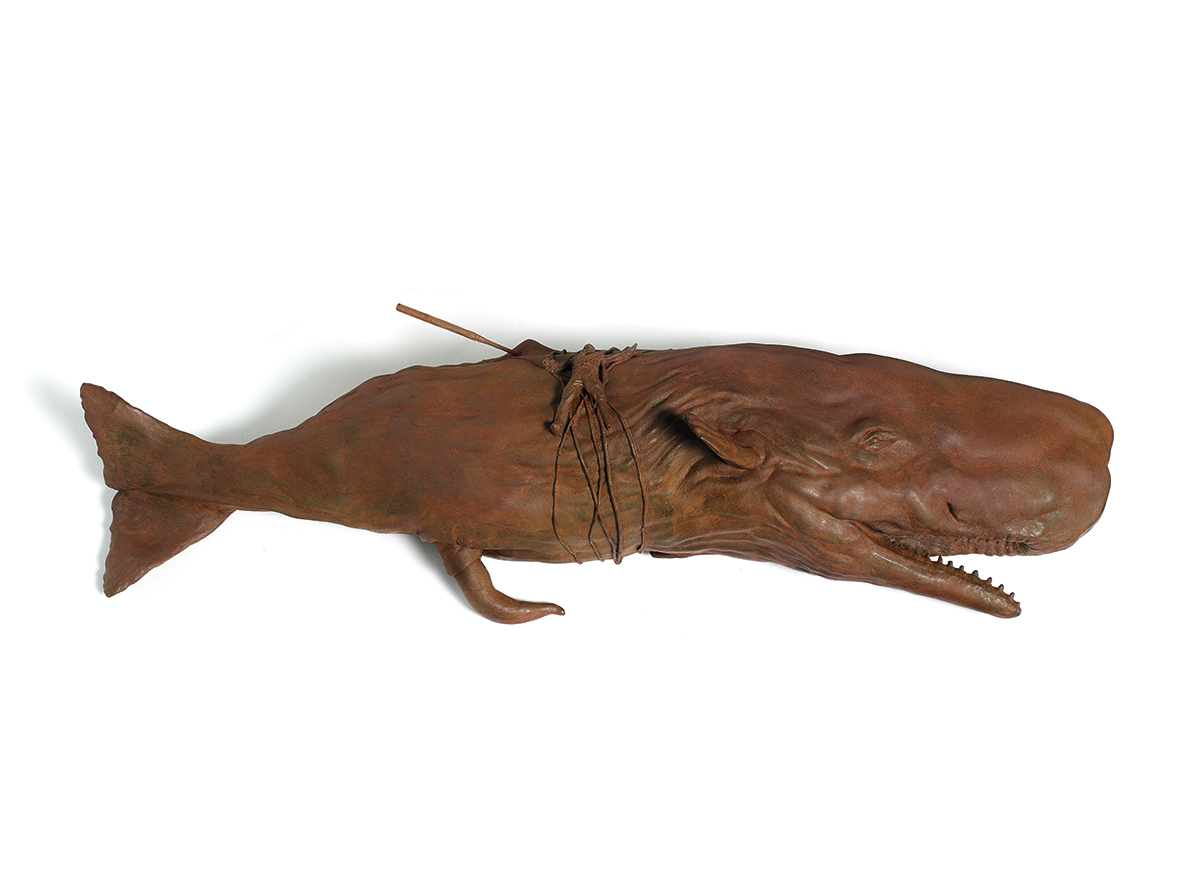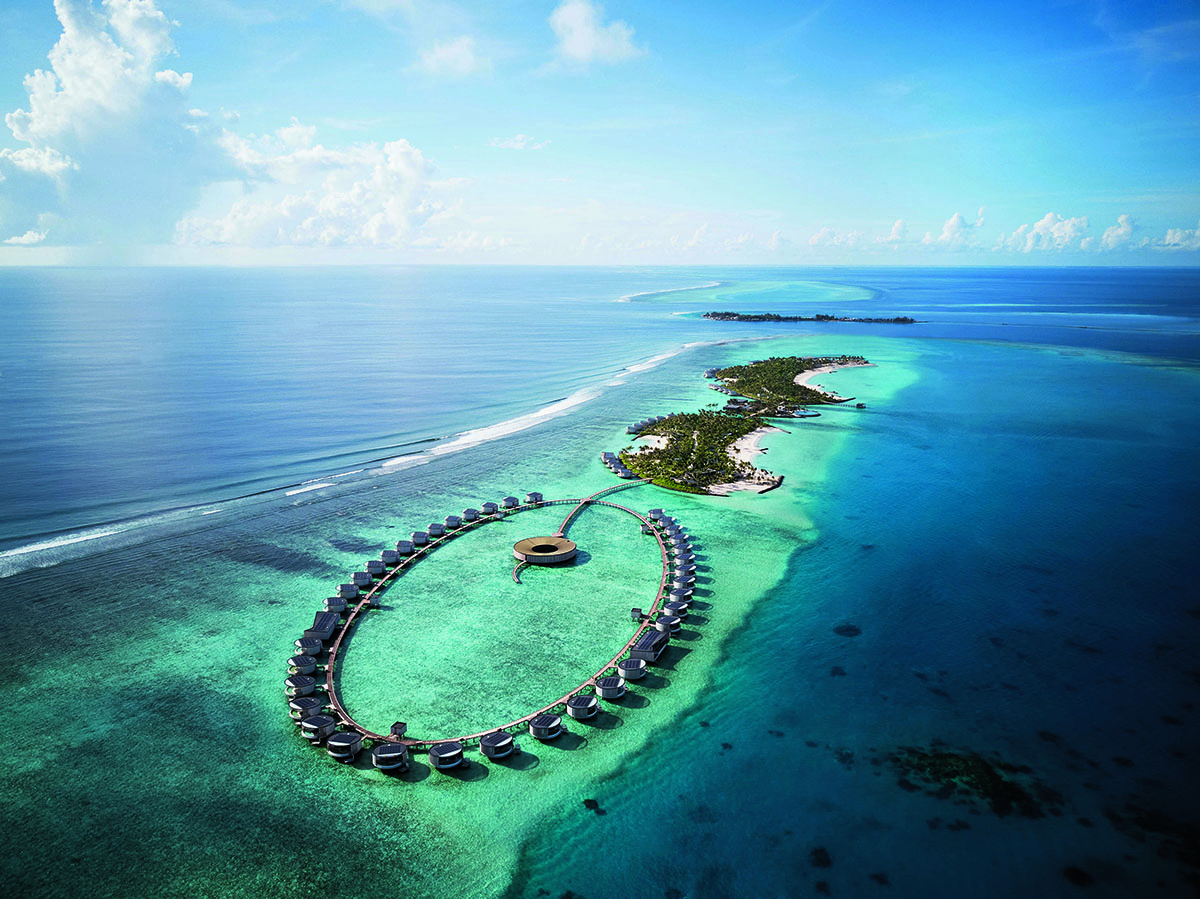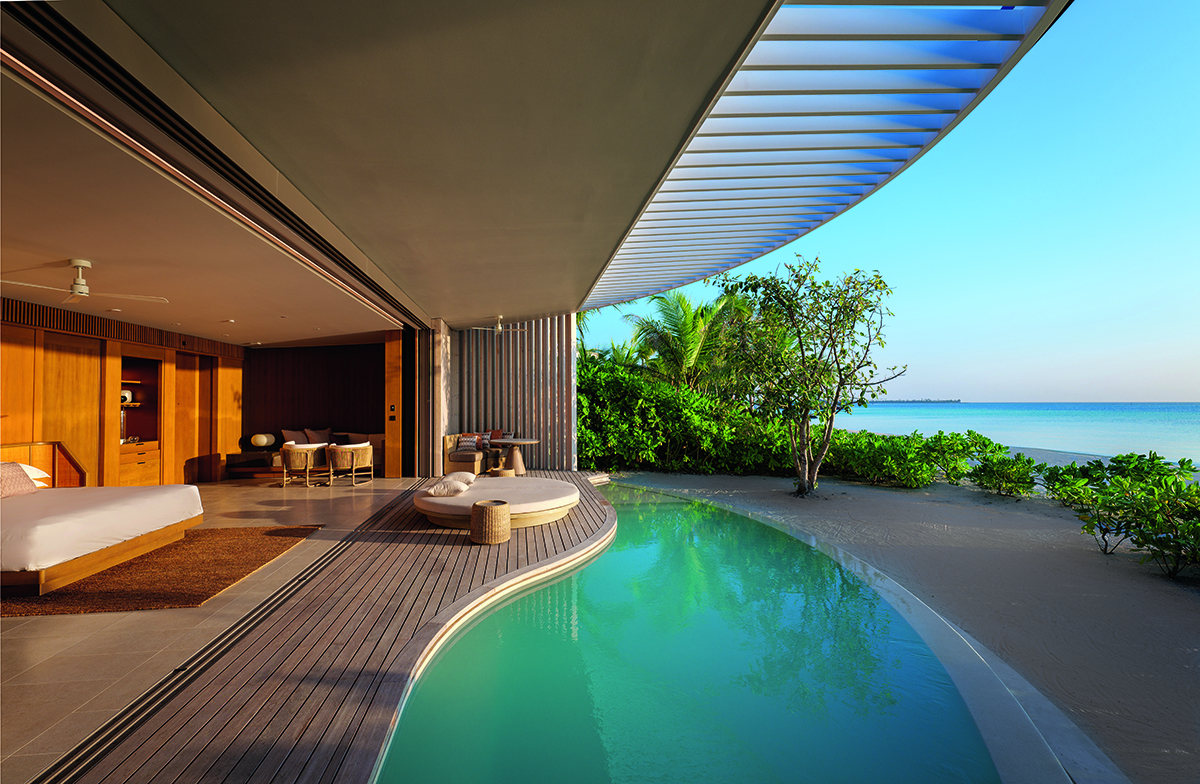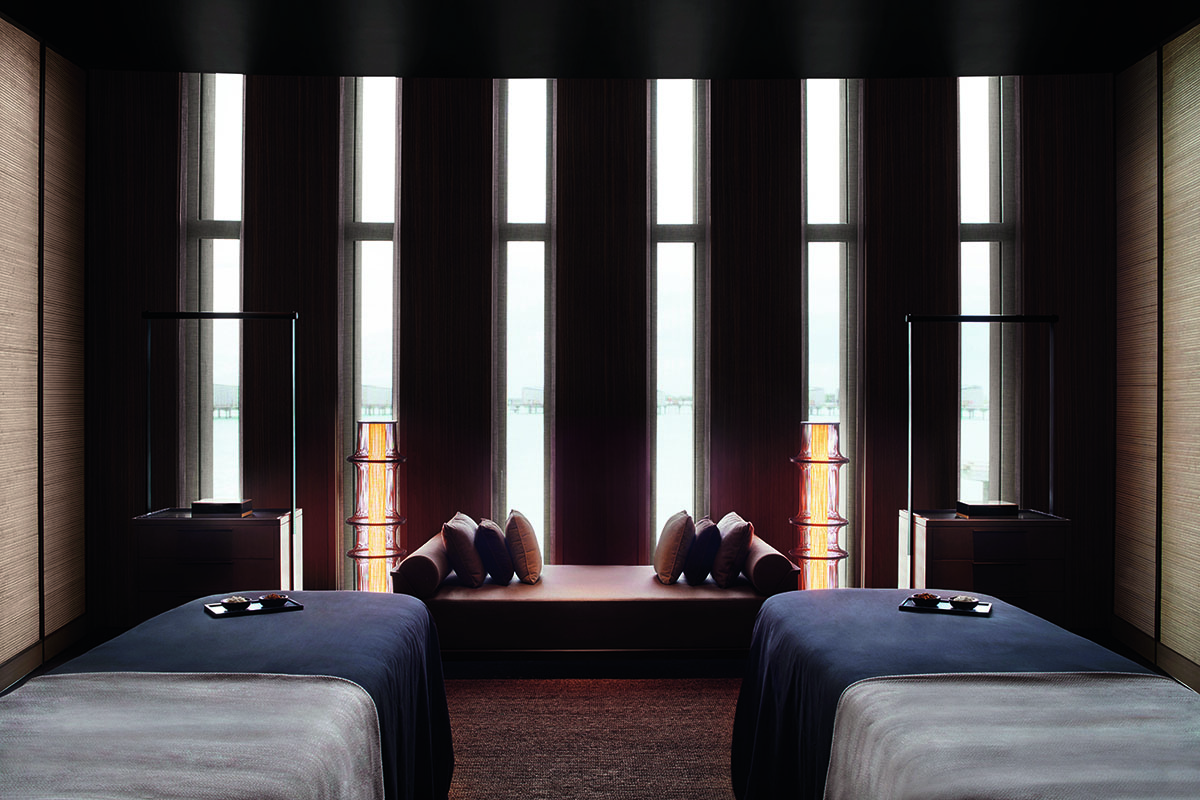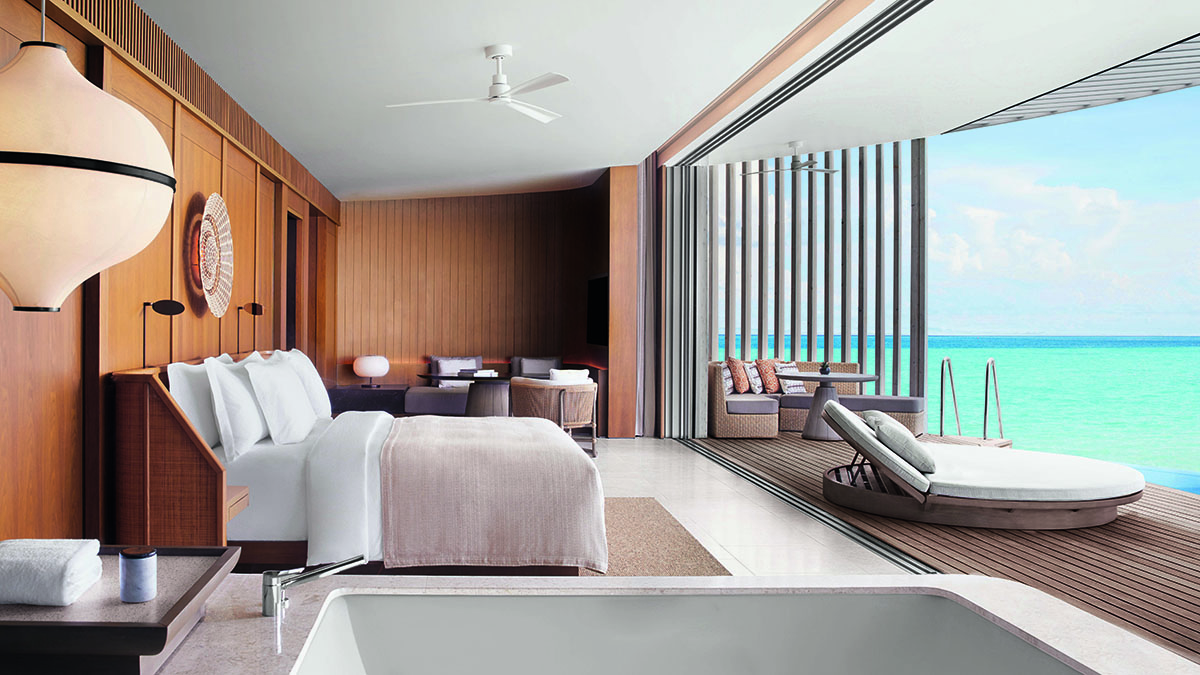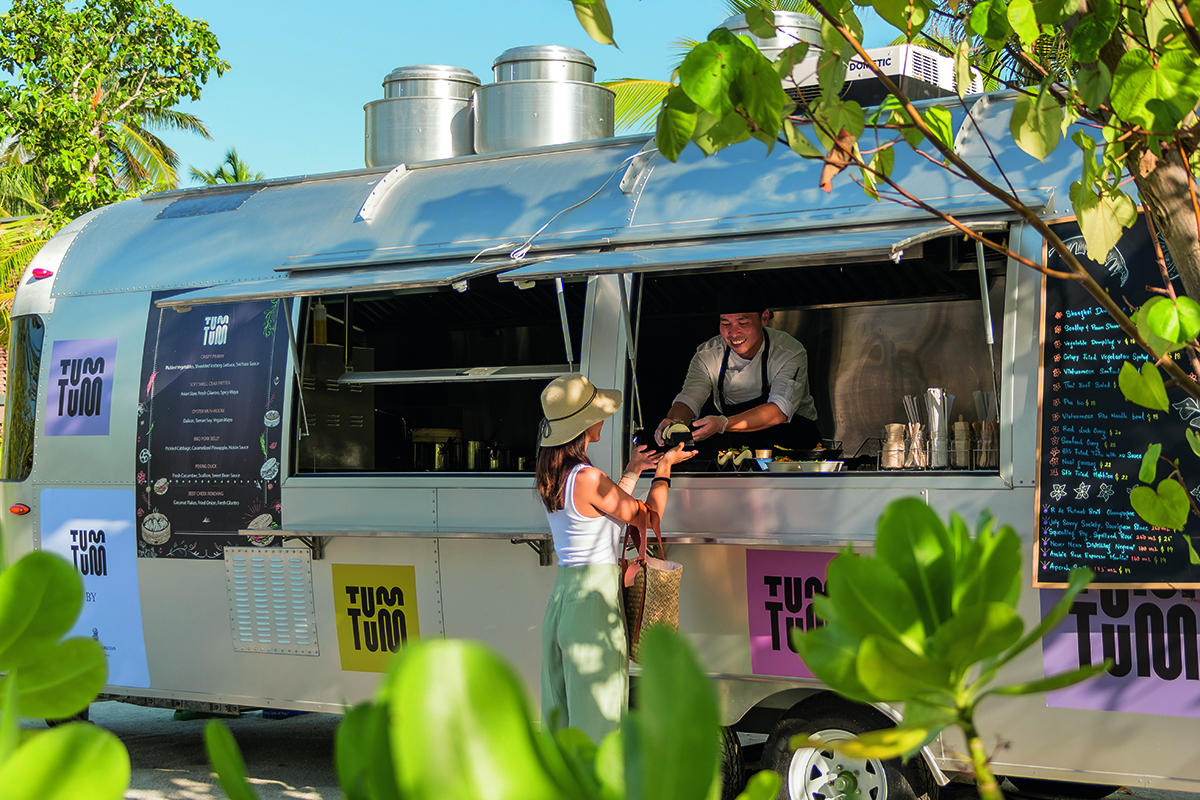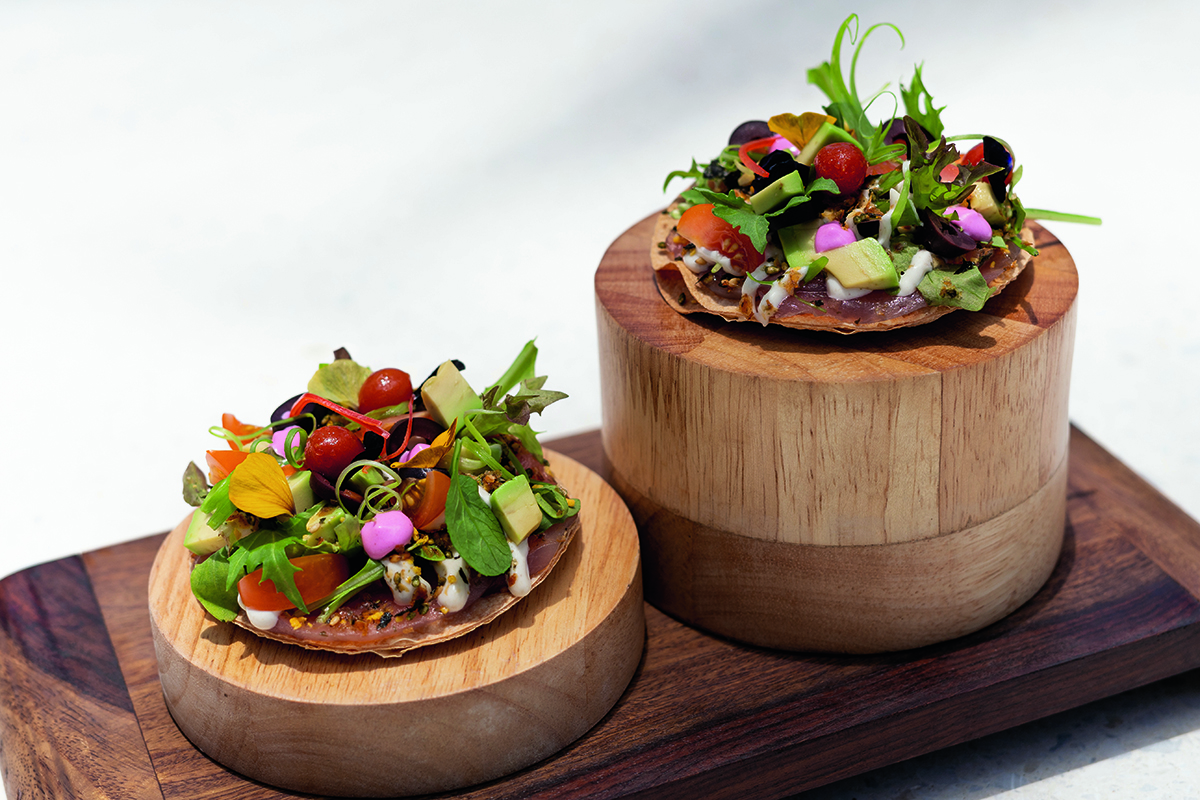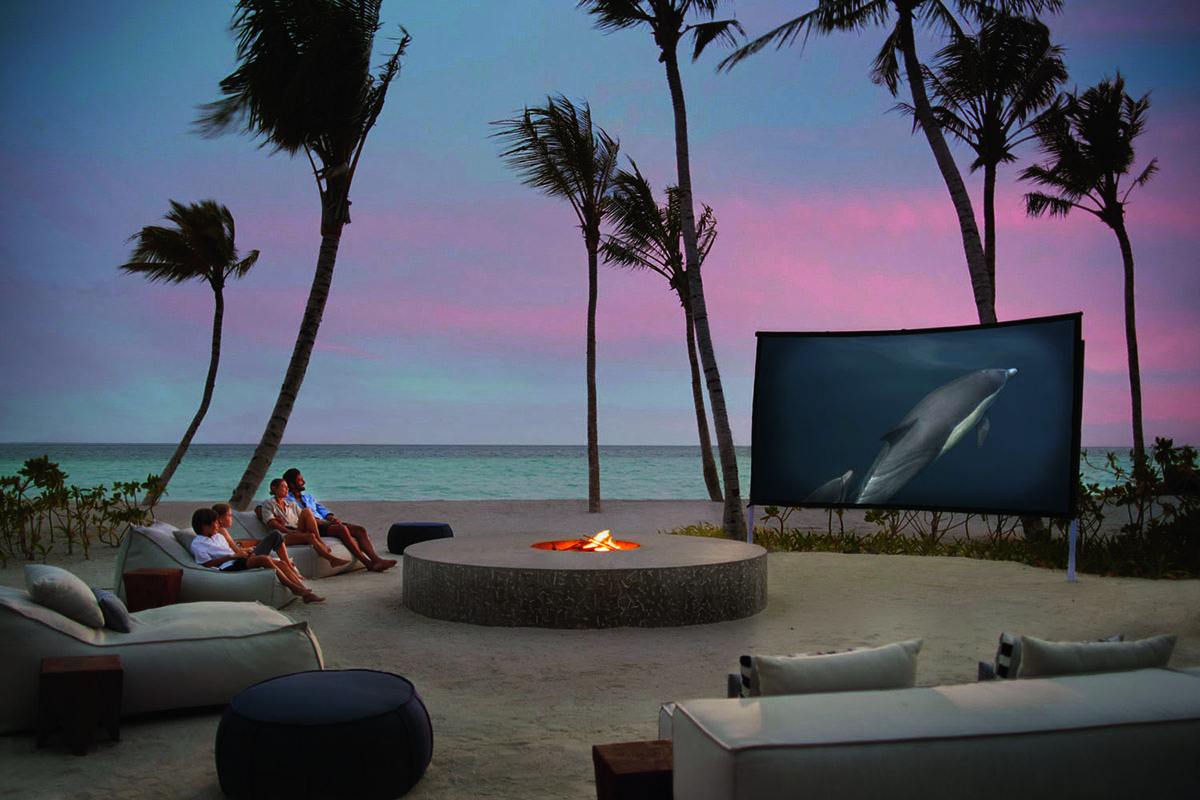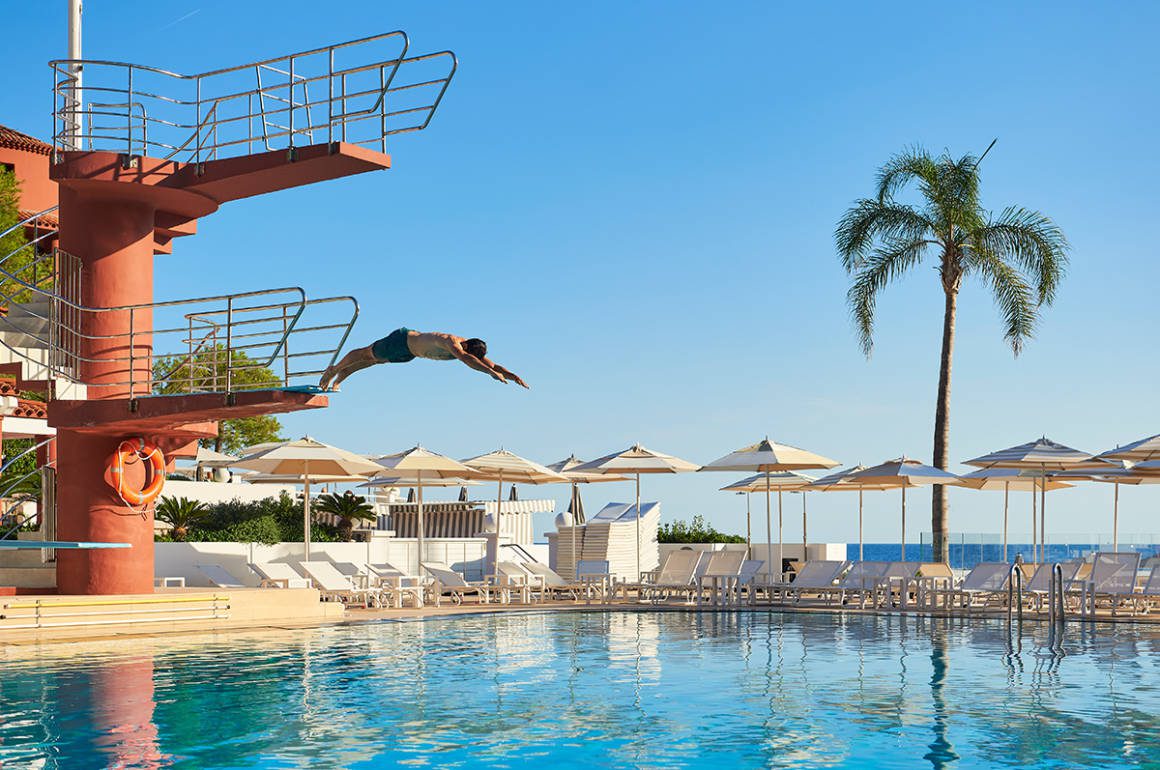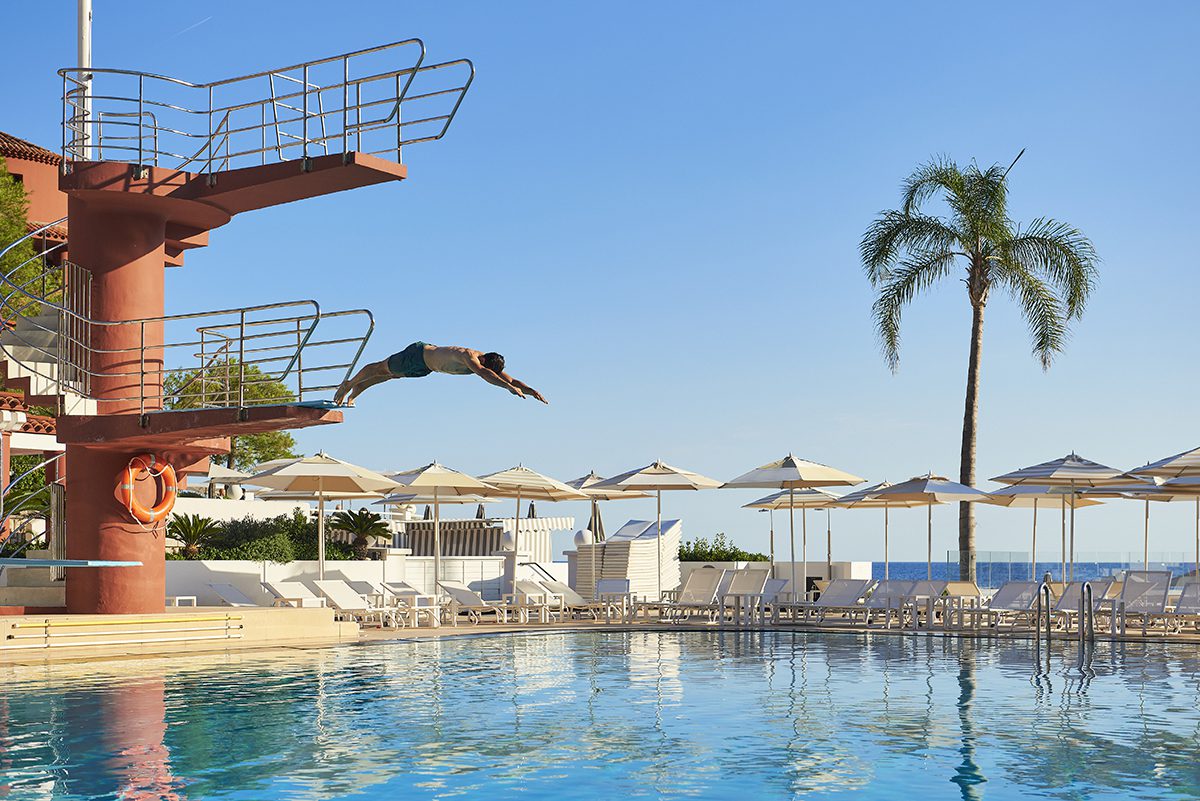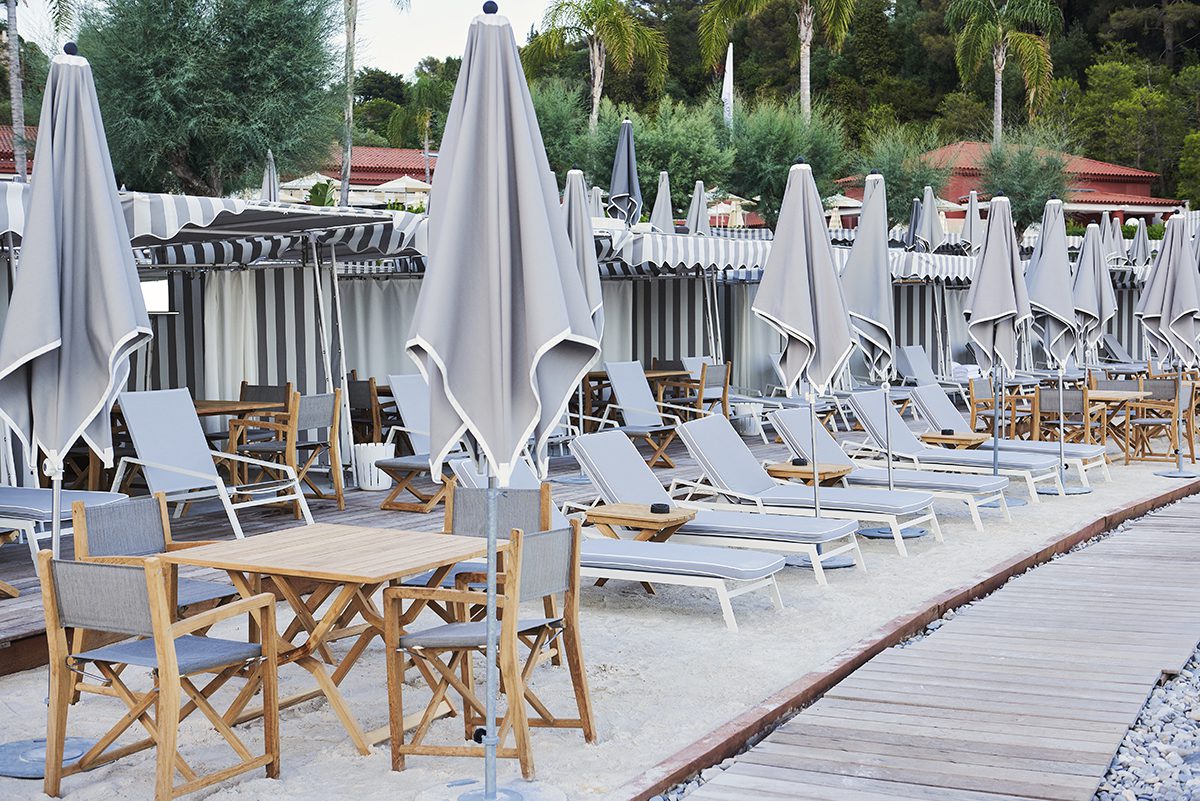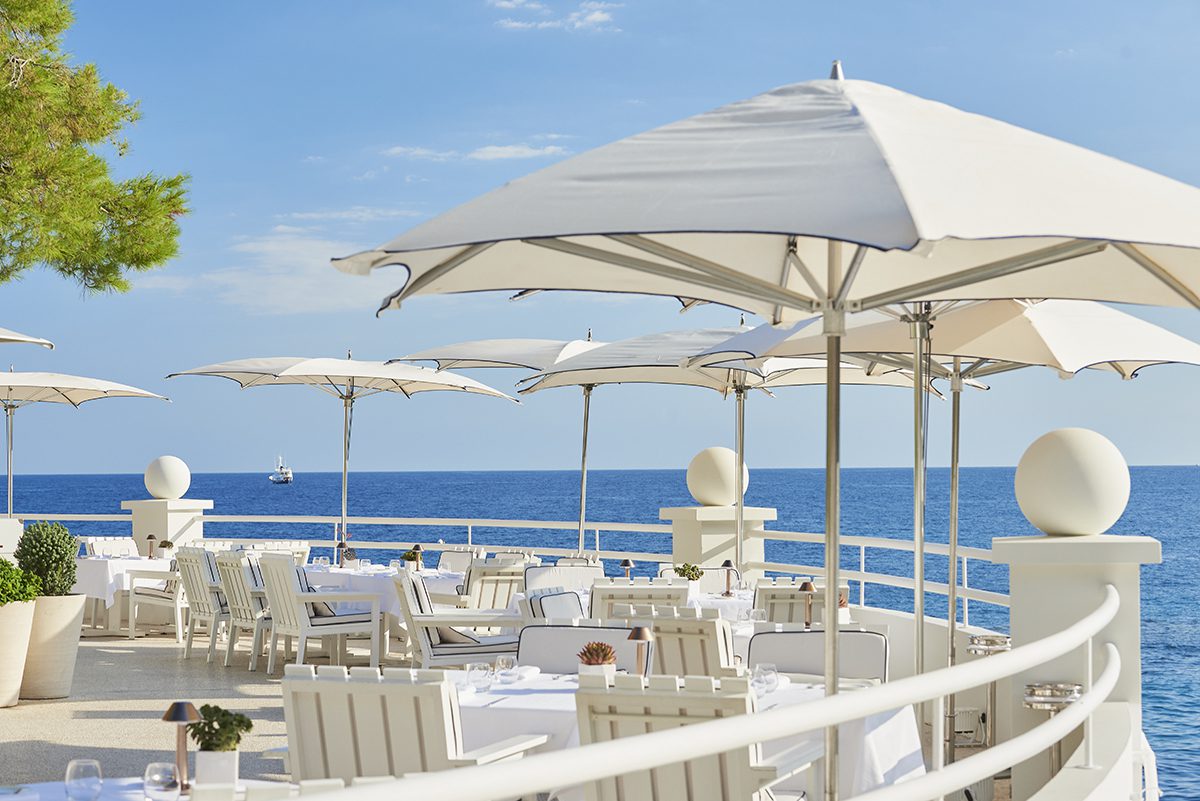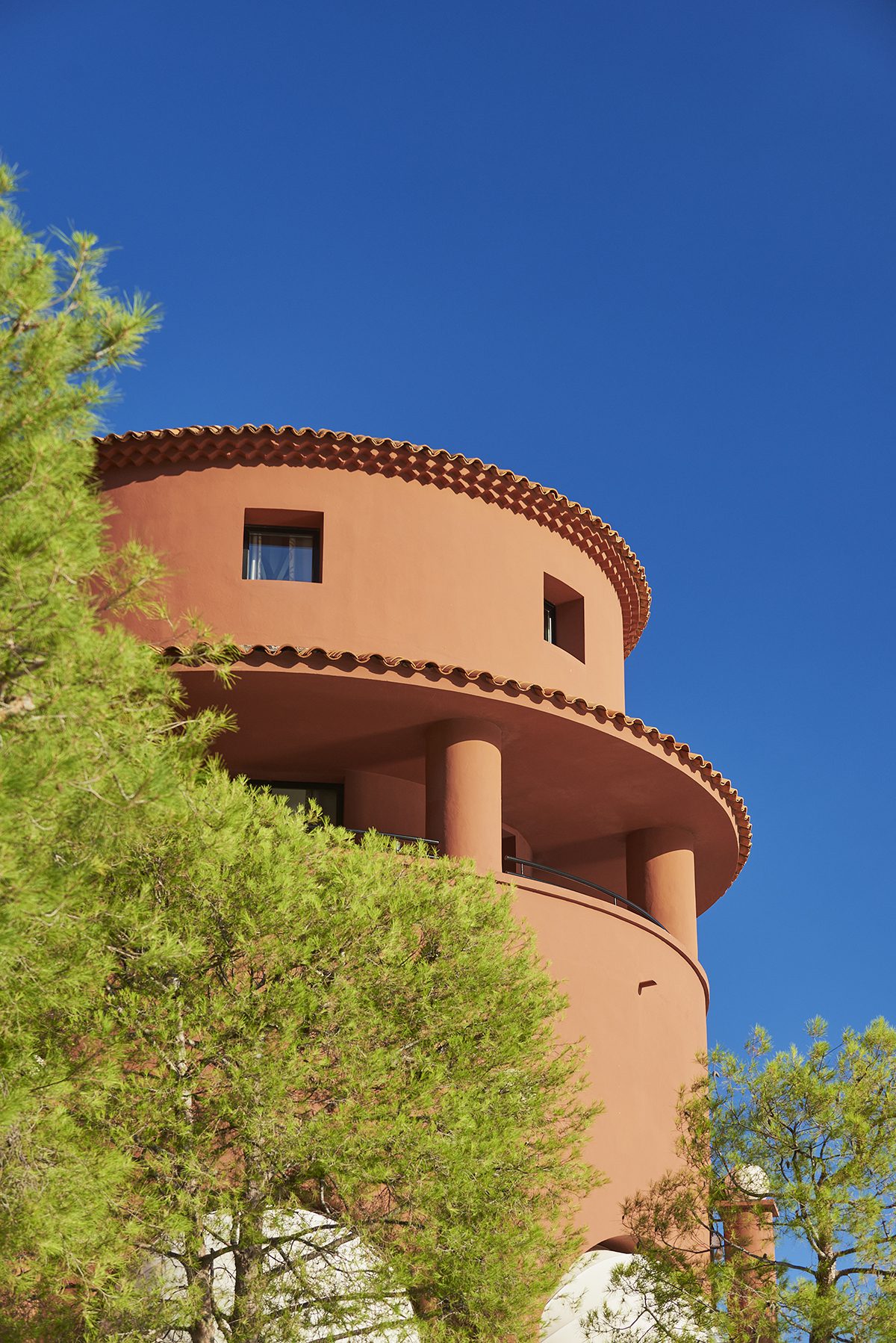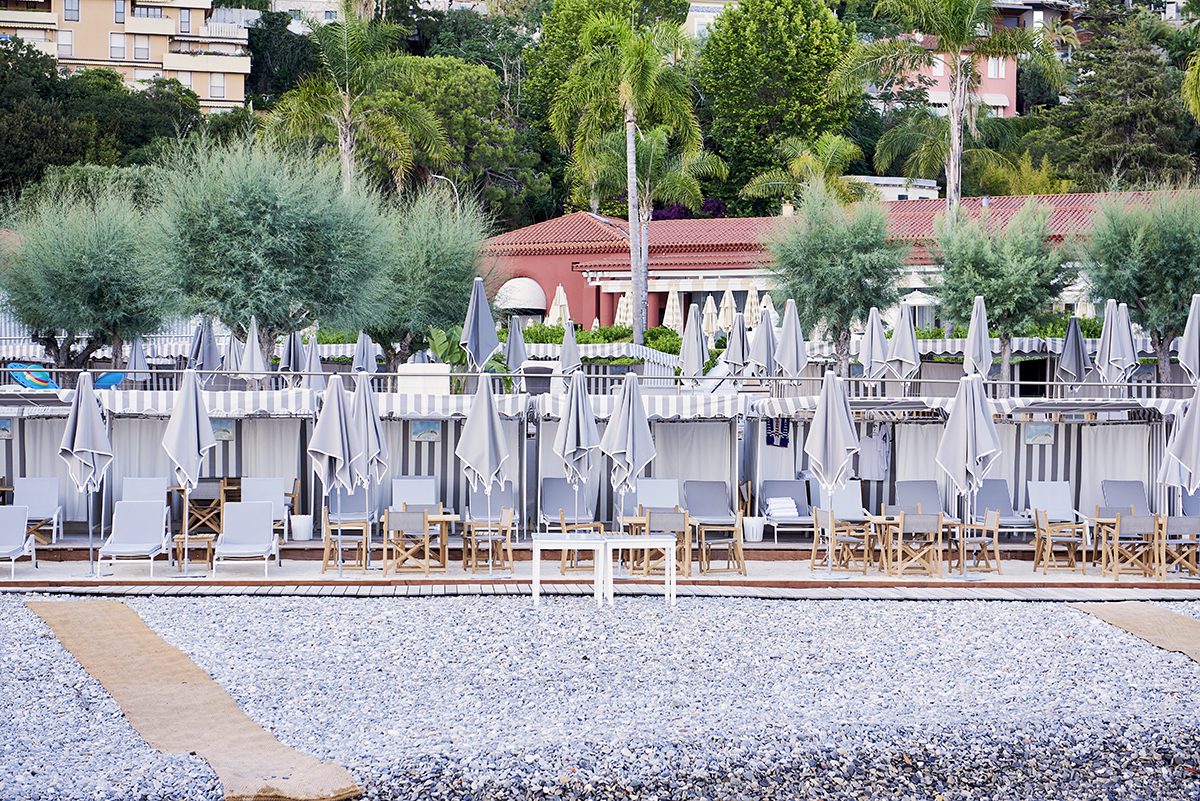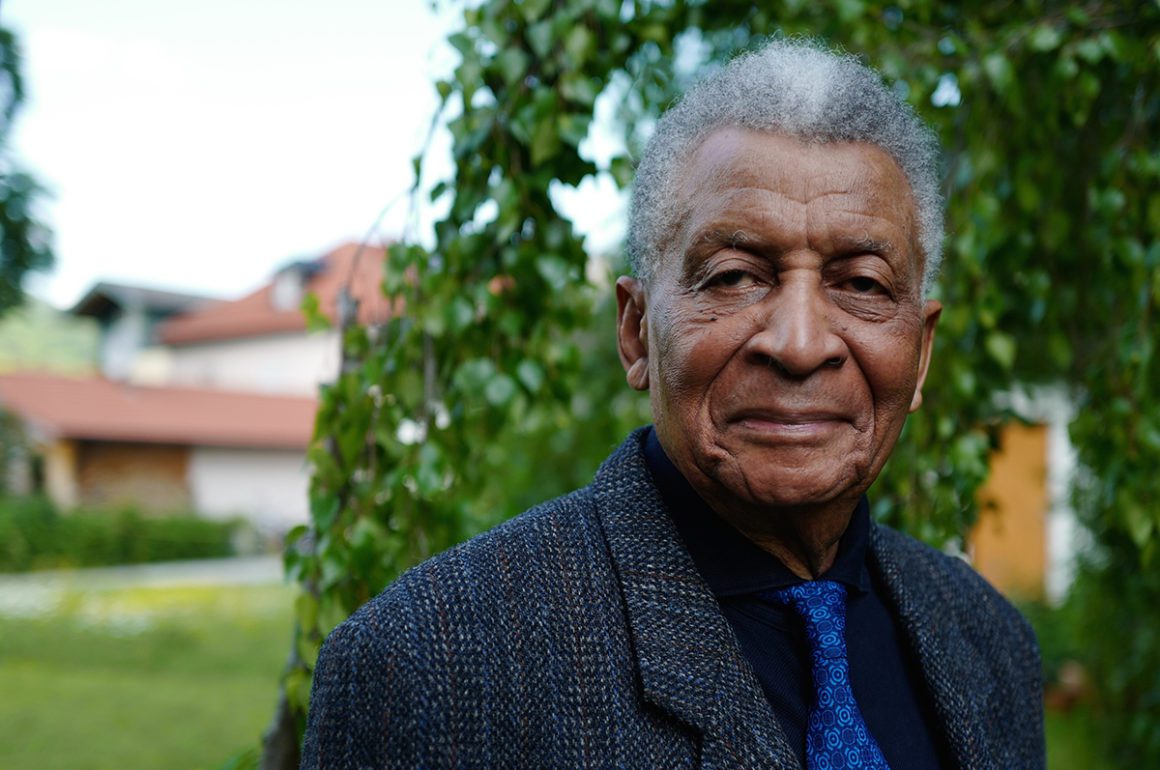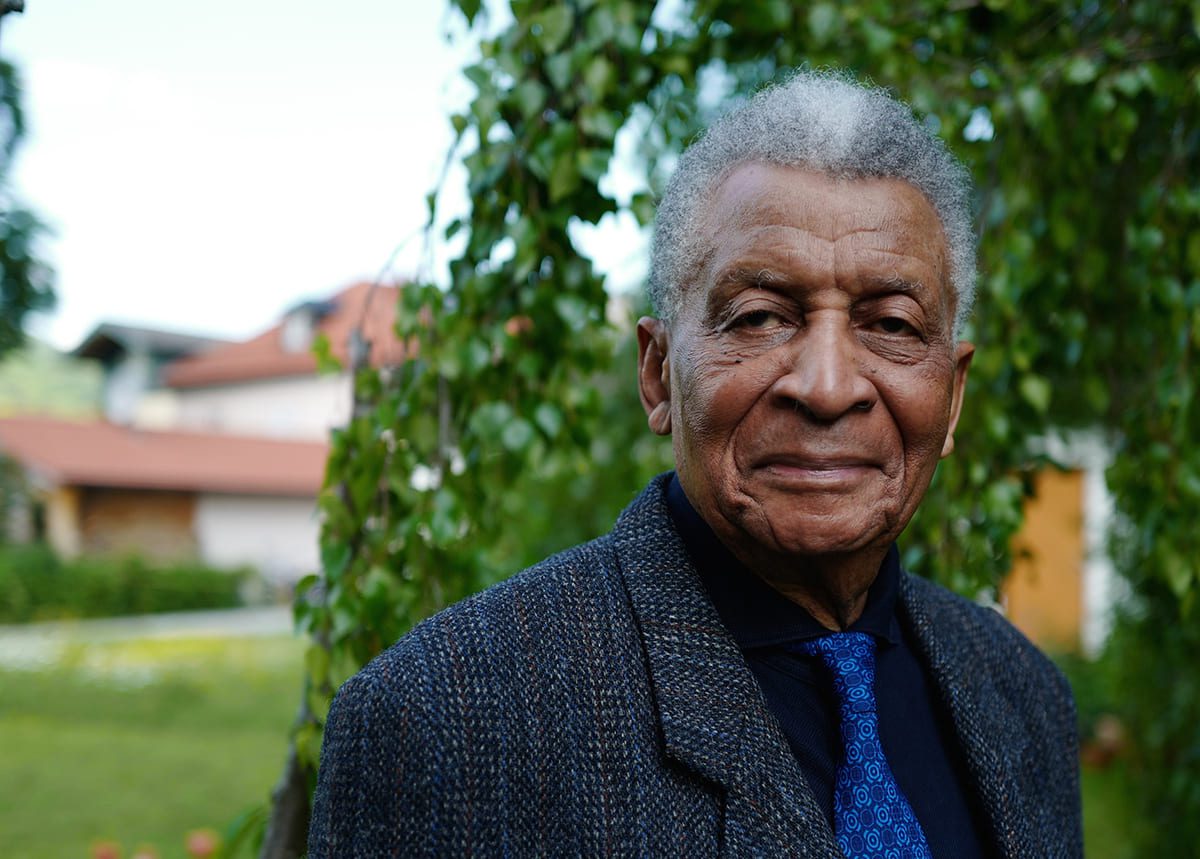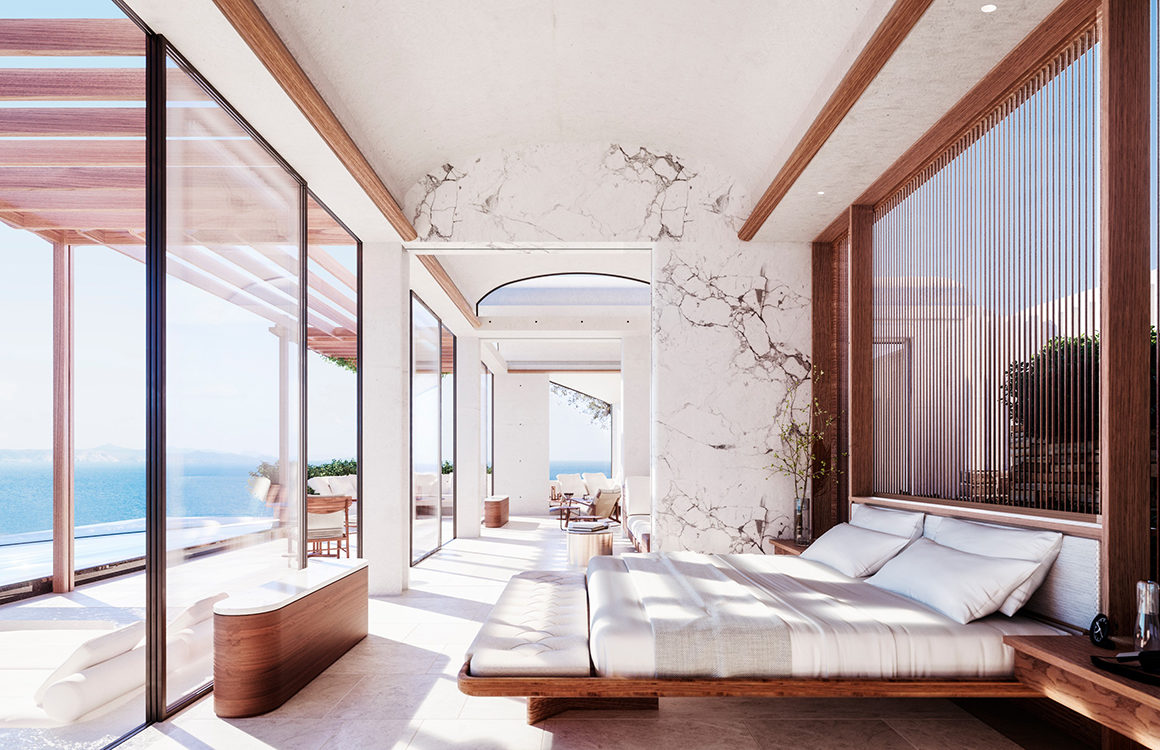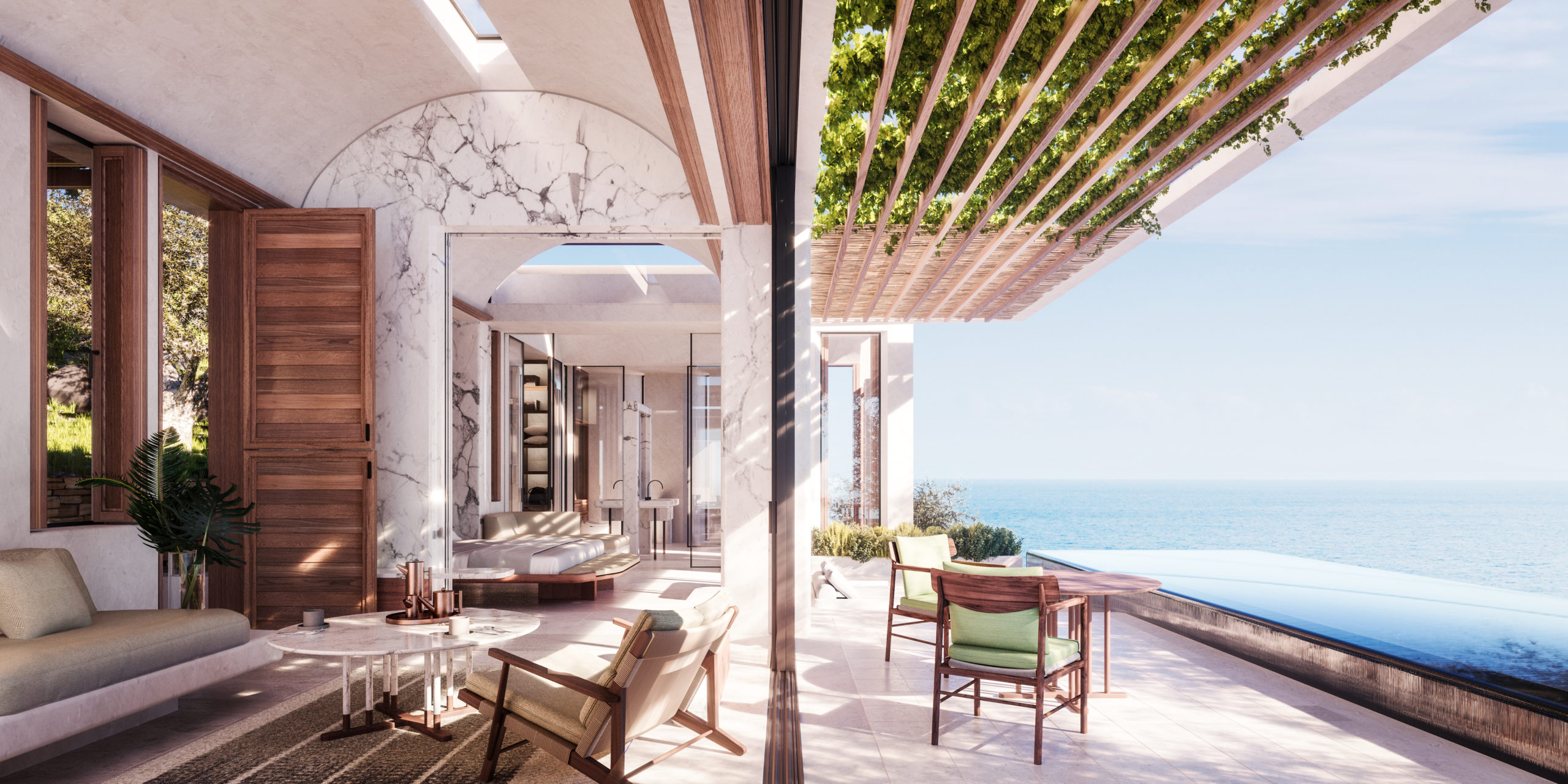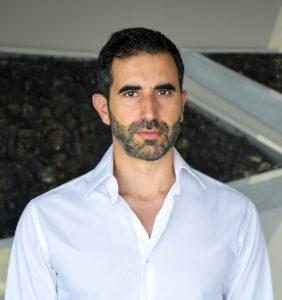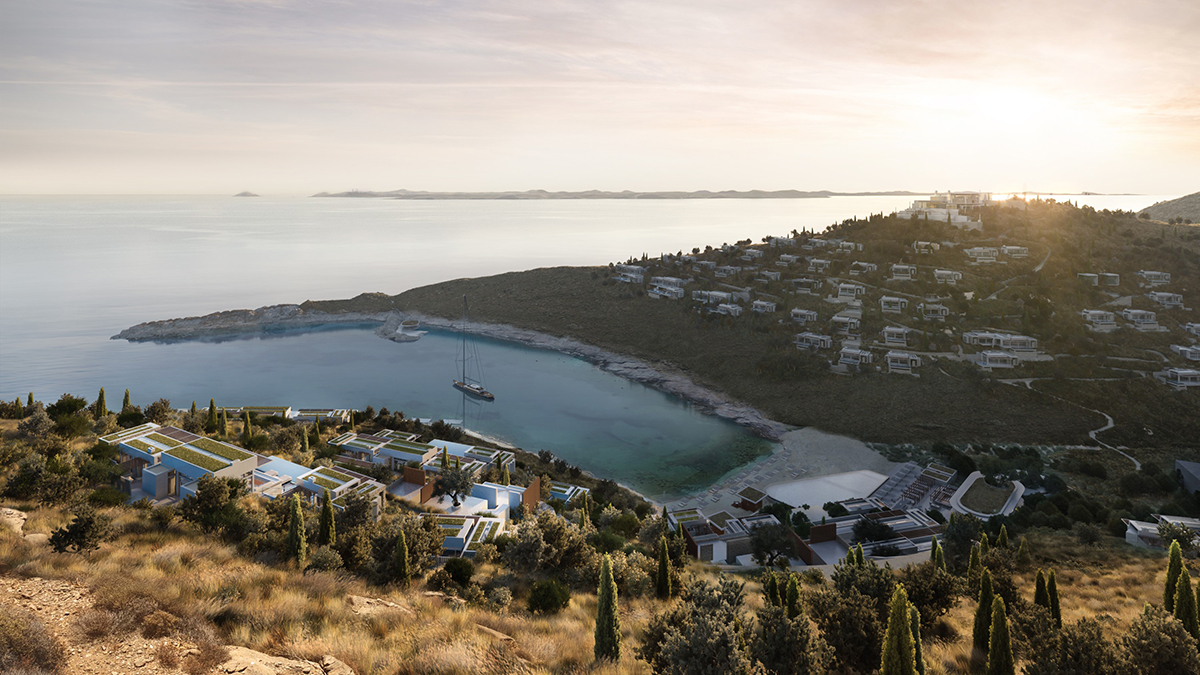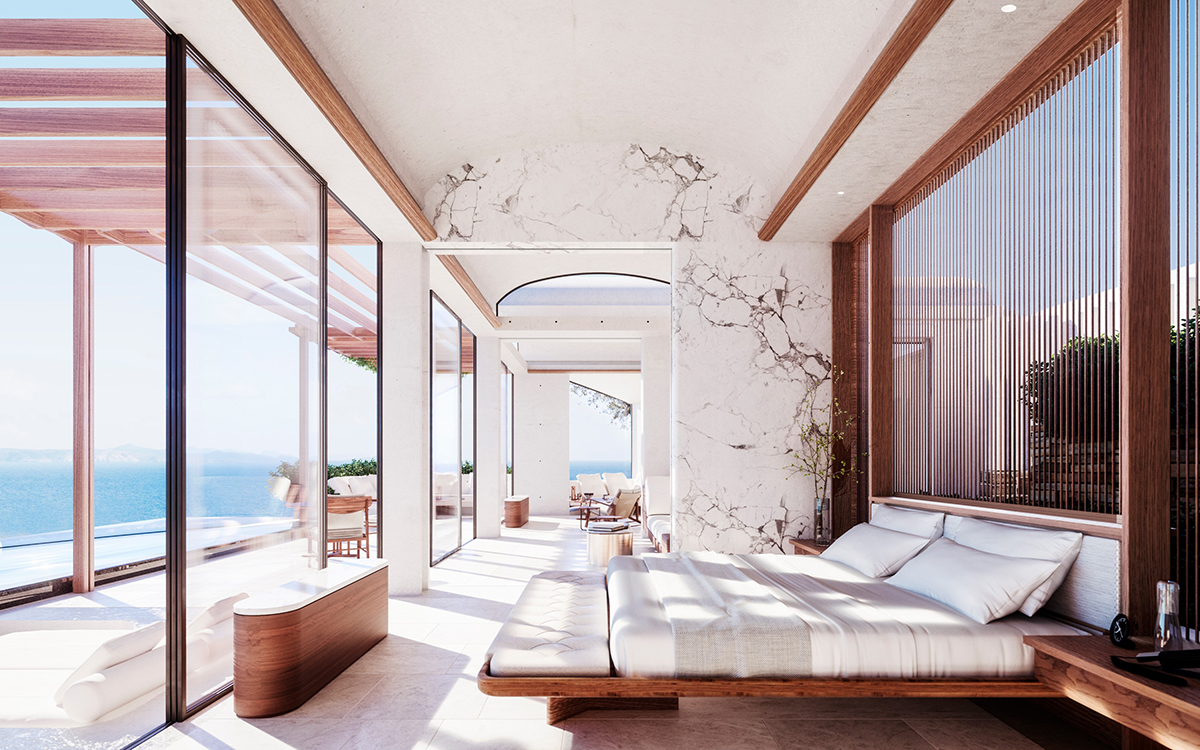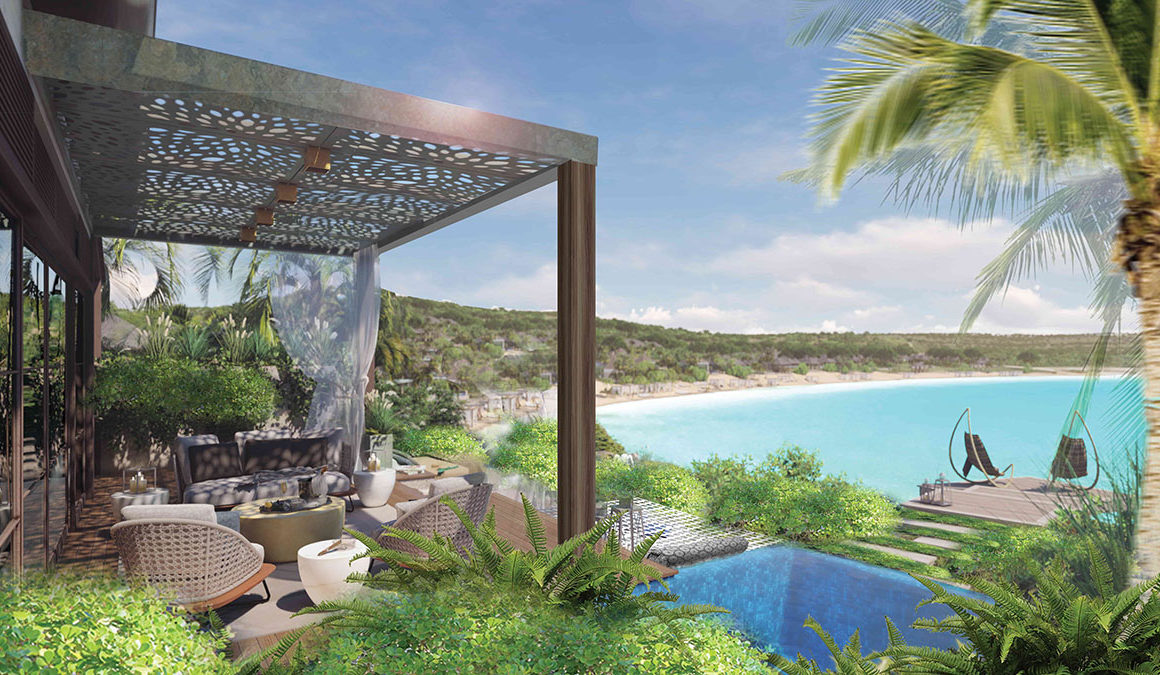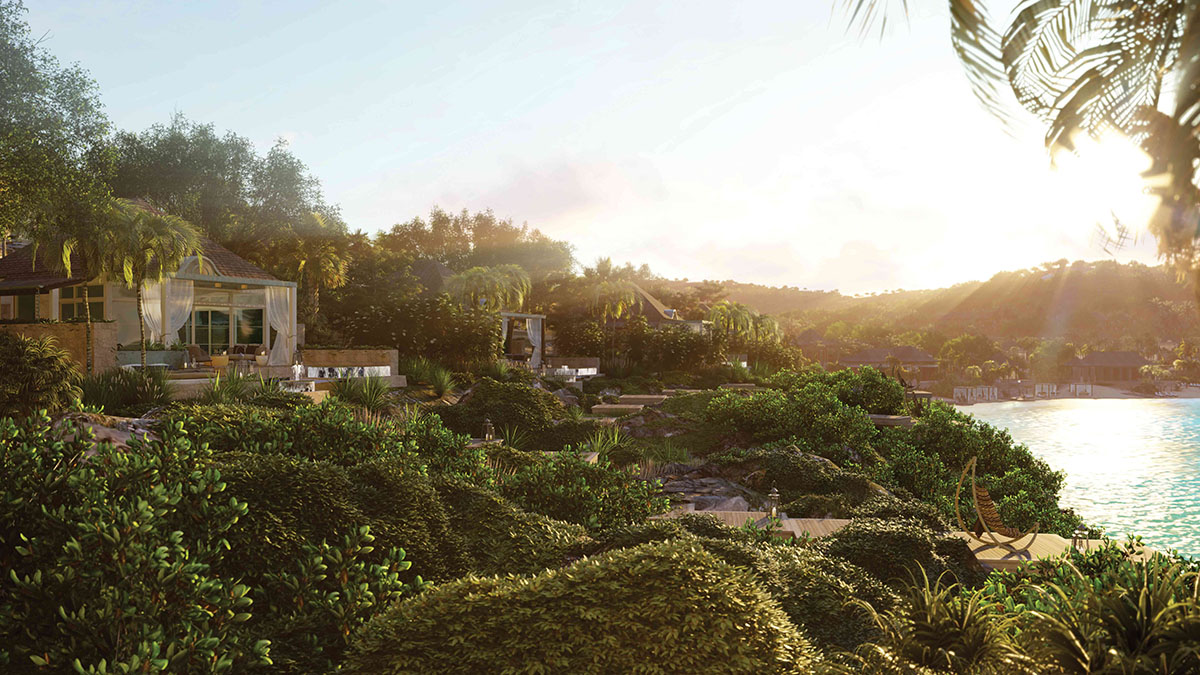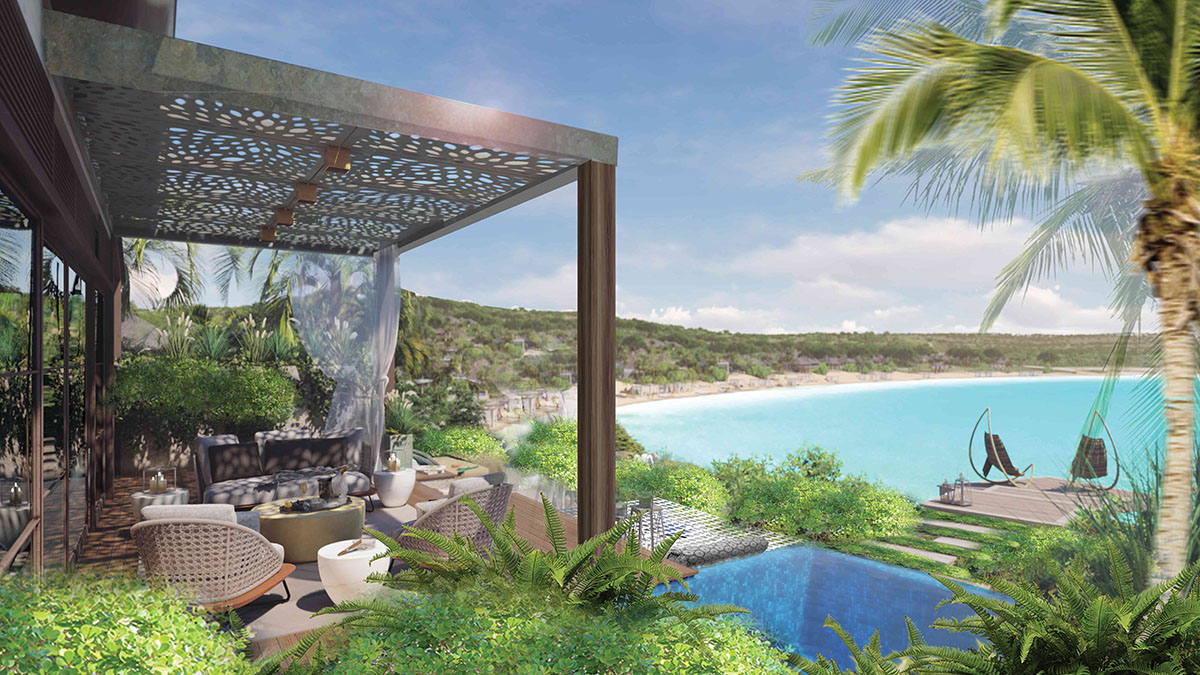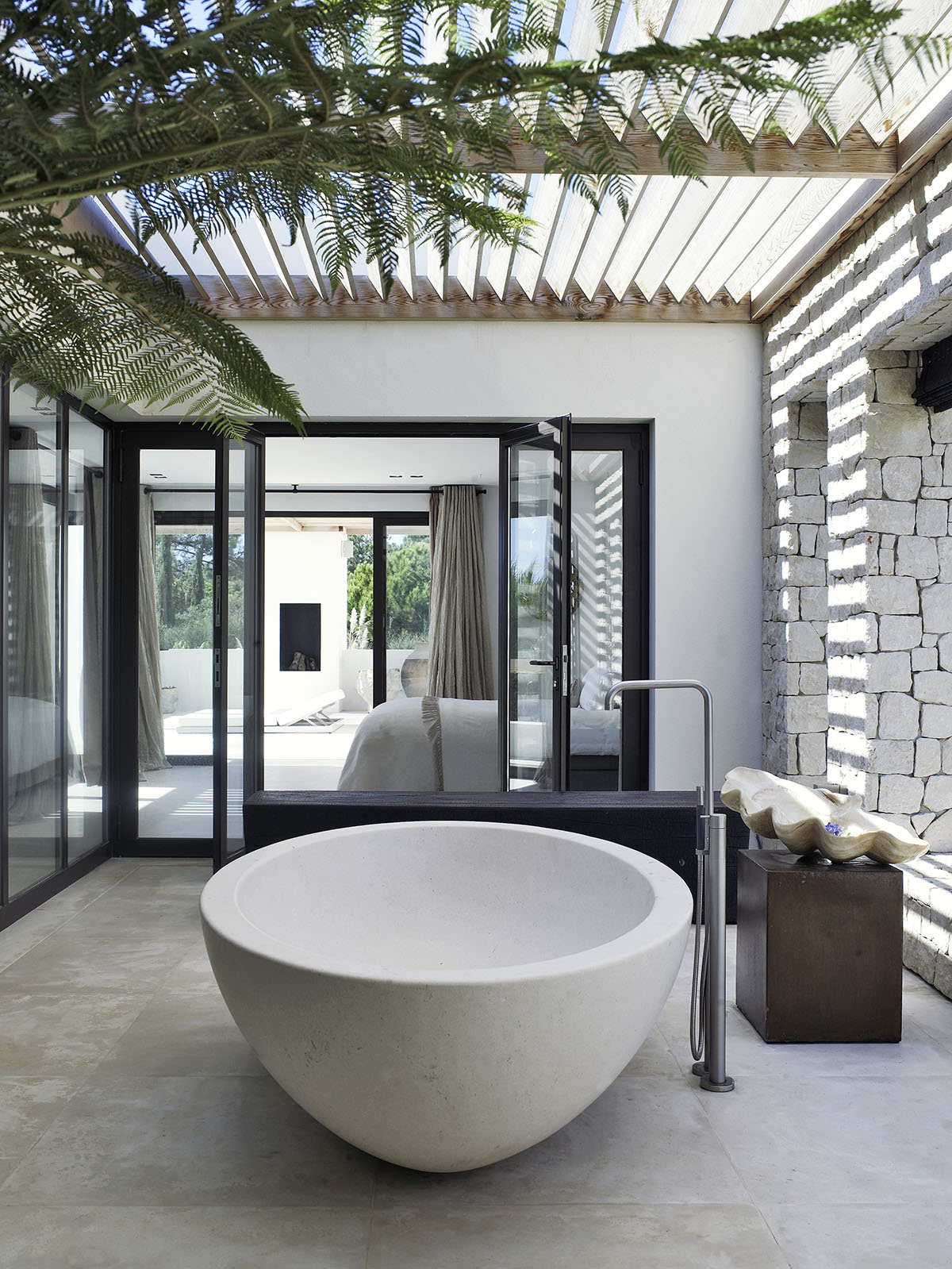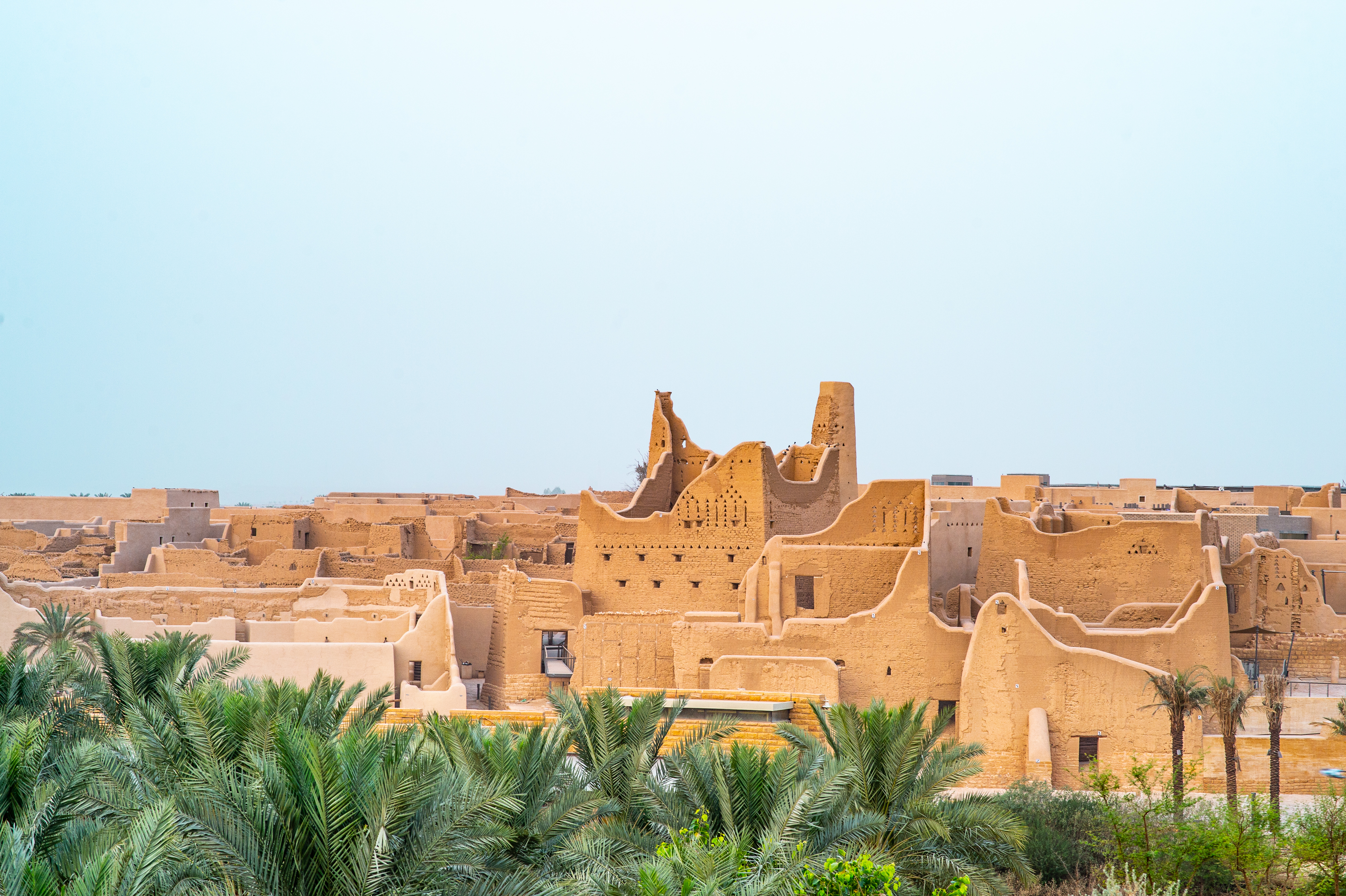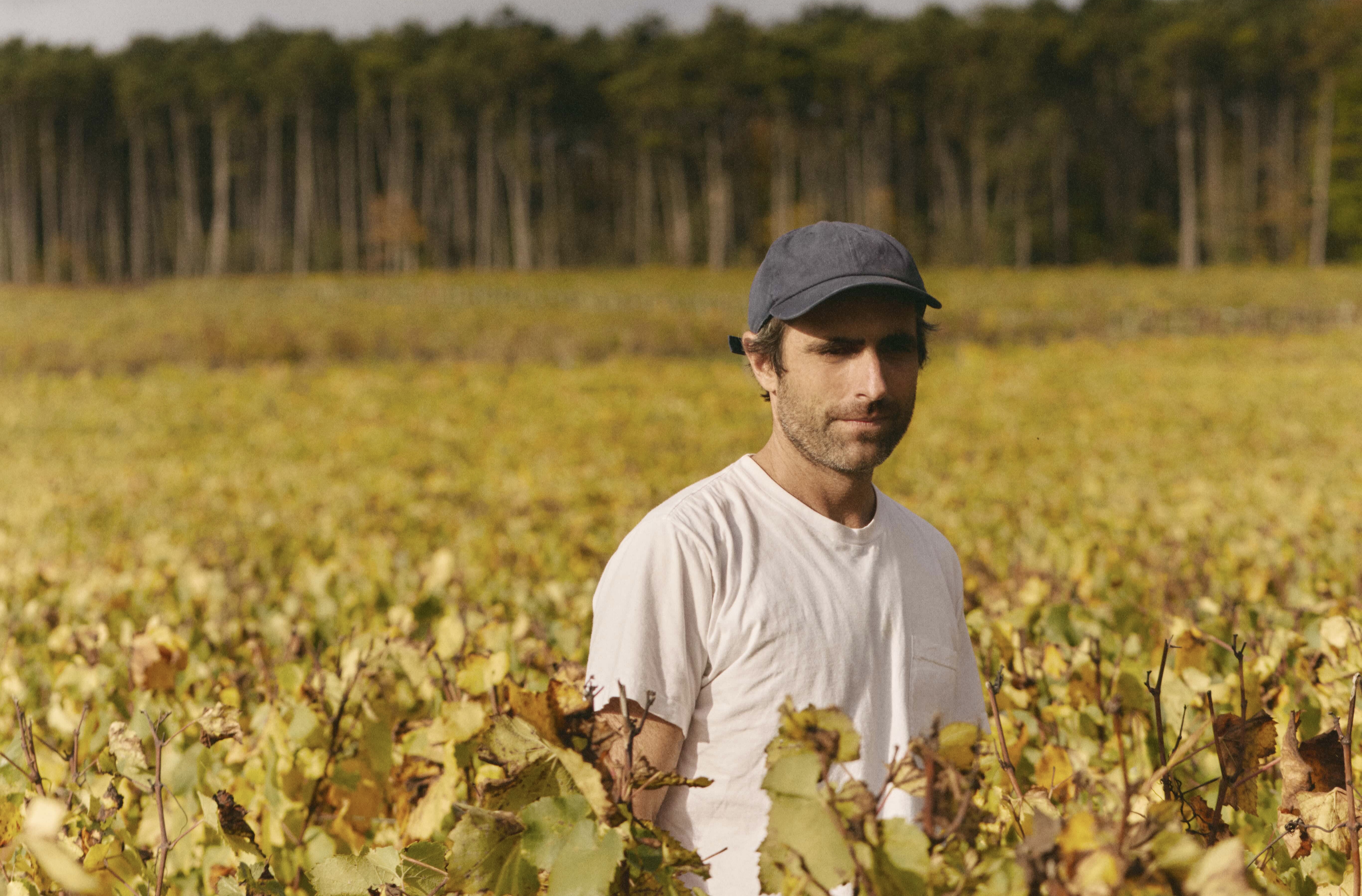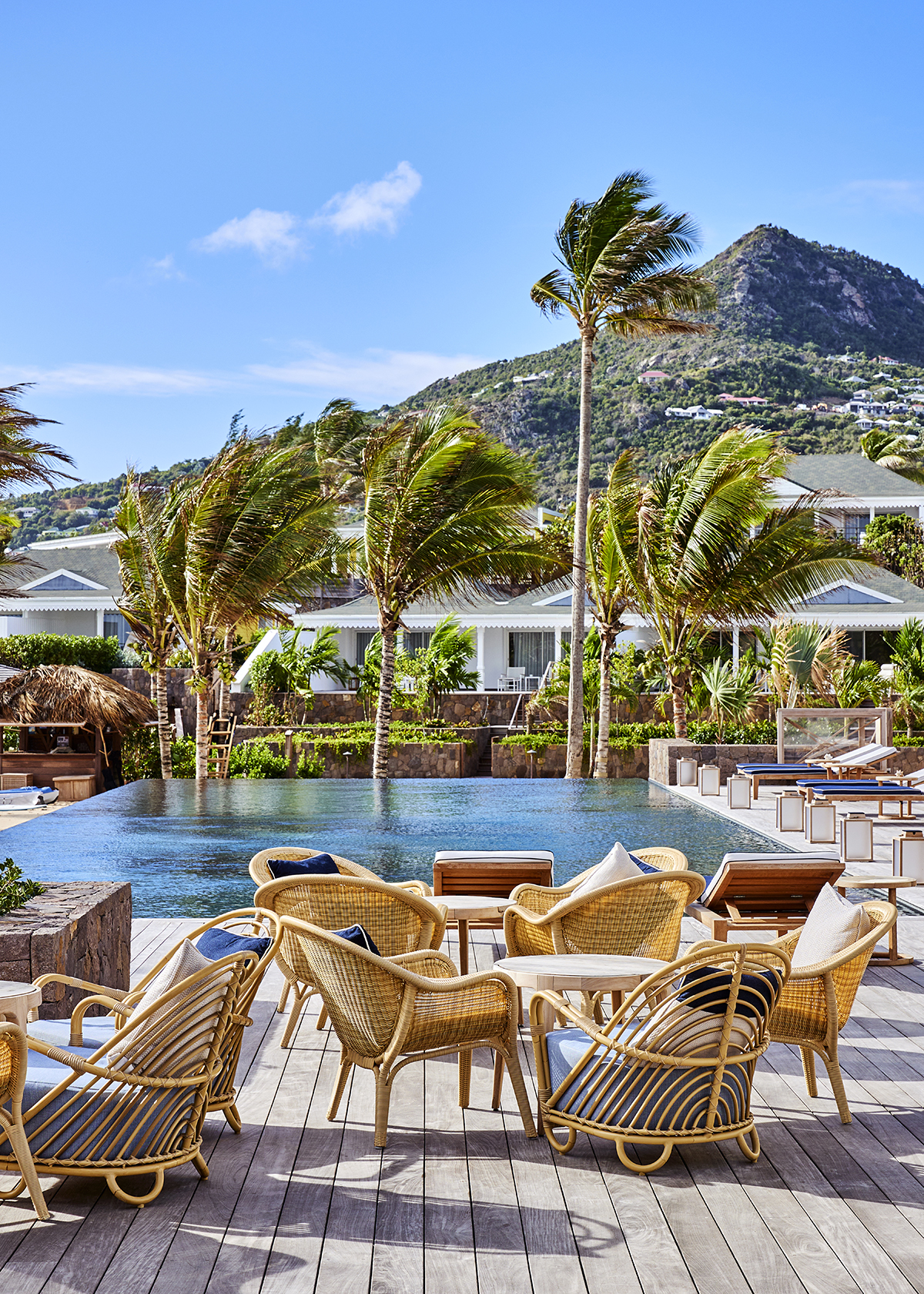
The Beach House terrace at the Rosewood Le Guanahani
With its gleaming white sands and jet-set visitors, St Barths is known as the most exclusive and extravagant of the Caribbean islands. Candice Tucker discovers natural wonders, beautiful hotels and a party spirit
It may be an exclusive destination today, but it is possibly that the early Arawak communities of the tropical island of St Barths were never sufficiently impressed to put down roots – poor soil and water sources saw to that. St Barthélemy has always relied on imports- from food to fresh water and, for the past half century, the super-wealthy.
Restaurants, beach clubs, taxis, villas -all are expensive on the 25sqkm island. unlike other Caribbean destinations, there are no cheaper options. Only the best is available. An unexpected benefit is that local workers expect salaries high than those in London, New York and Hong Kong.
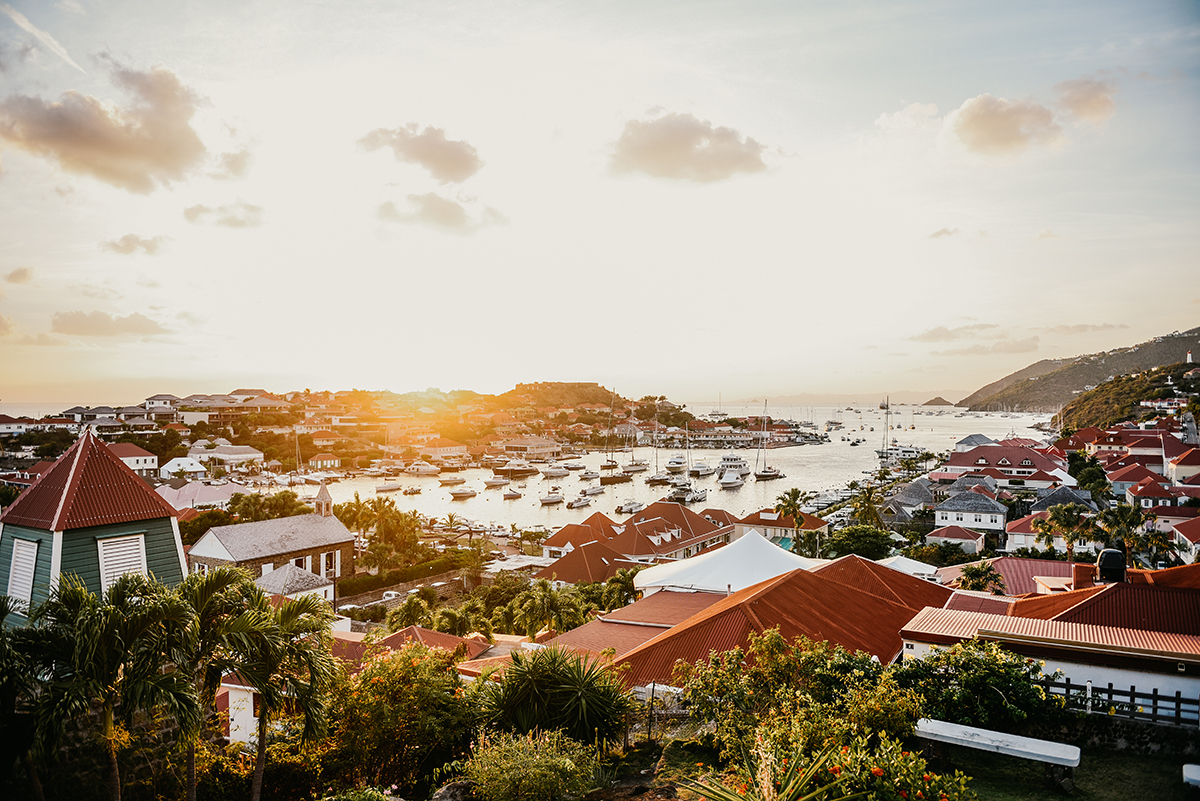
A view of Gustavia, capital of St Barthélemy on the west of the island
To enjoy the island’ delights, visitors must first arrive. This is slightly hair-raising as your six seater plane has to land between two mountains on one of the world’s shortest runways. not recommended for nervous fliers.
Follow LUX on Instagram: luxthemagazine
My first stop was the Rosewood Le Guanahani, located on a private peninsula in the northeast and featuring 66 contemporary rooms and suites, each with a private terrace, in villas and cottages.My experience began by being escorted to a spacious yellow bungalow whose overlooked small green islands in the sea. The room was light and airy with pale walls, white wood-beamed ceiling and soft furnishings offset by dark wood floors and furniture.
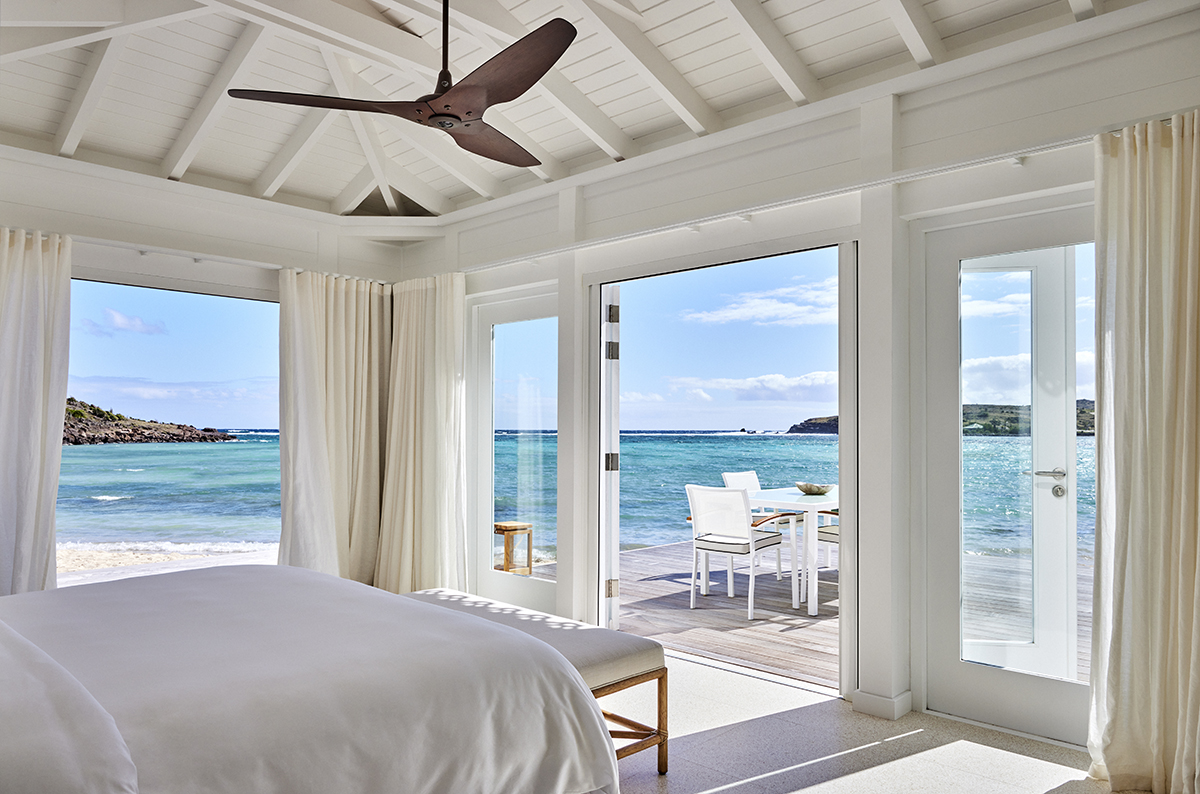
The two-bedroom Lagoon Suite, situated directly on the beach, at the Rosewood Le Guanahani
The hotel, unlike many in St Barths, enjoys a calm sea and is ideal for families. Its spa features a serene adults-only pool and offers a variety of relaxing treatments. However, you might find simply lazing on a loungers at one of the hotel’s two beaches, being offered ice-cold mango sorbets and accras de morue (a delicacy of spiced salt-cod fritters), enjoying uninterrupted sea views, is relaxing enough.
In the evening, I joined the hotels live music barbecue. The ceviche stand offering a choice of sliced fish with limitless toppings of tomatoes, cucumbers, onion, and exotic fruit was a highlight, as was enjoying sunset overlooking the sea. Set in 18 acres, the resort is St Barths’ largest, and amenities include non-motorised water sports and a private gentle hike to the hilltop, from where you can view half of the island.
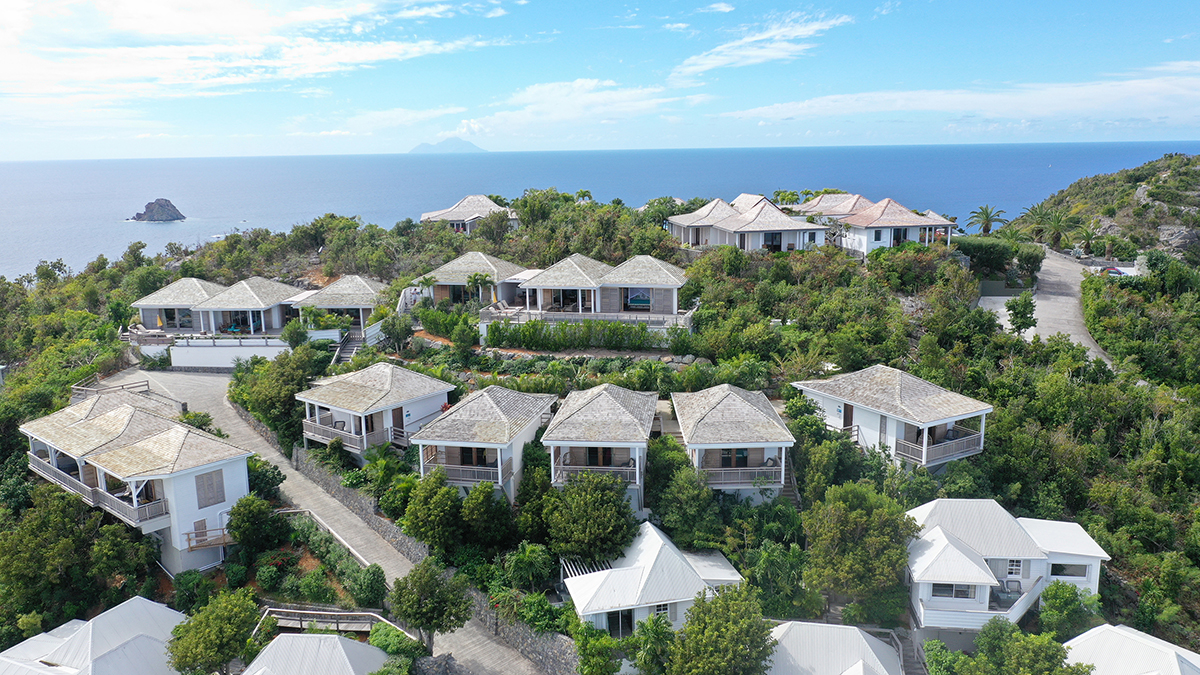
The hilltop bungalows and villas of Villa Marie
For a different but equally special experience, I stayed at Villa Marie’s Gyp Sea Hotel, a boutique hotel of 22 bungalows and villas in the northwest. As it is situated in the hills near the island’s highest point, there is no direct beach access, but Villa Marie cocoons you in a tropical paradise, with spectacular views from each room’s terrace.
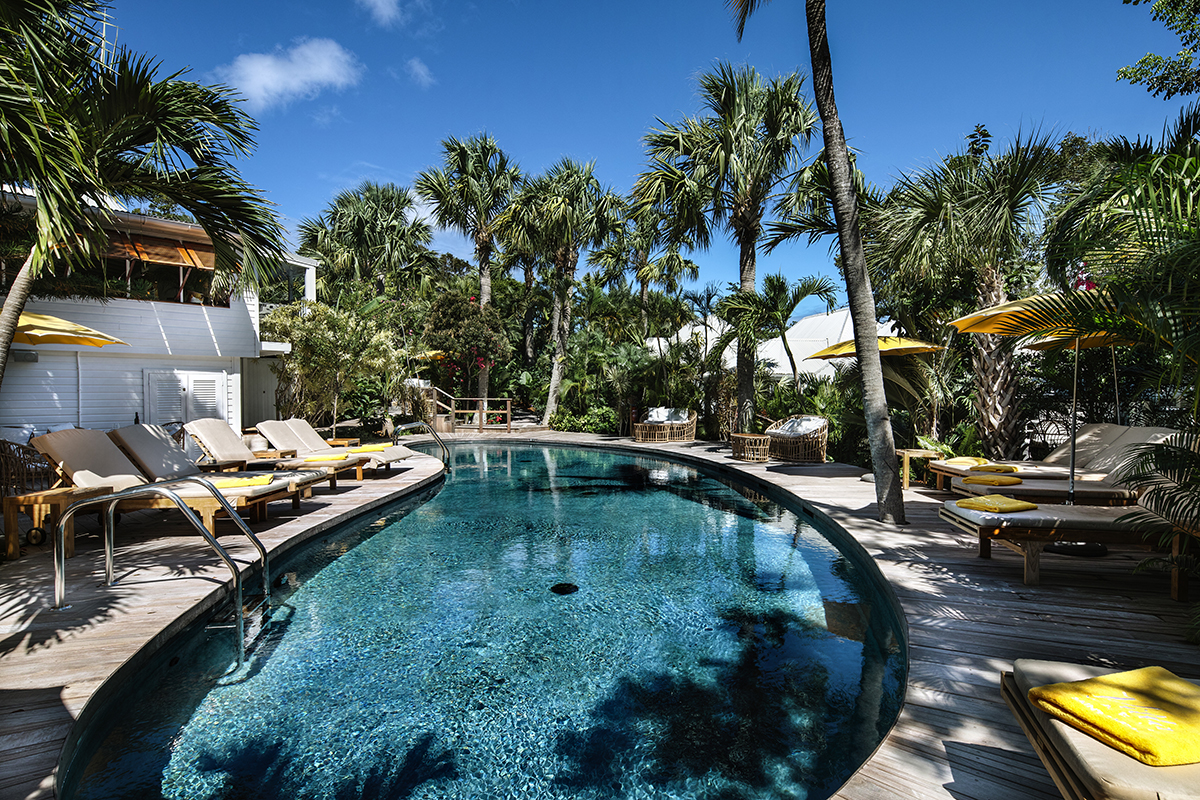
The palm tree-shaded pool in the Secret Garden at Villa Marie
Hikes around the property give you various views of the island and beyond to Anguilla, 43 km away. A walk through a forest, surrounded by goats, down to Colombier Beach is not one to miss. The hotel’s own beach club, Gyp Sea on Pelican Beach, is a few minutes from the hotel and, whether you stay at Villa Marie or not, it’s a must-see – all white sand and turquoise waters.
Read more: Badrutt’s Palace St Moritz, Review
The menu offers rustic-chic specialties including albacore tuna on toast and heavenly platters of profiteroles. At 3pm the music starts and everyone dances on the tables, in true St Barths spirit.
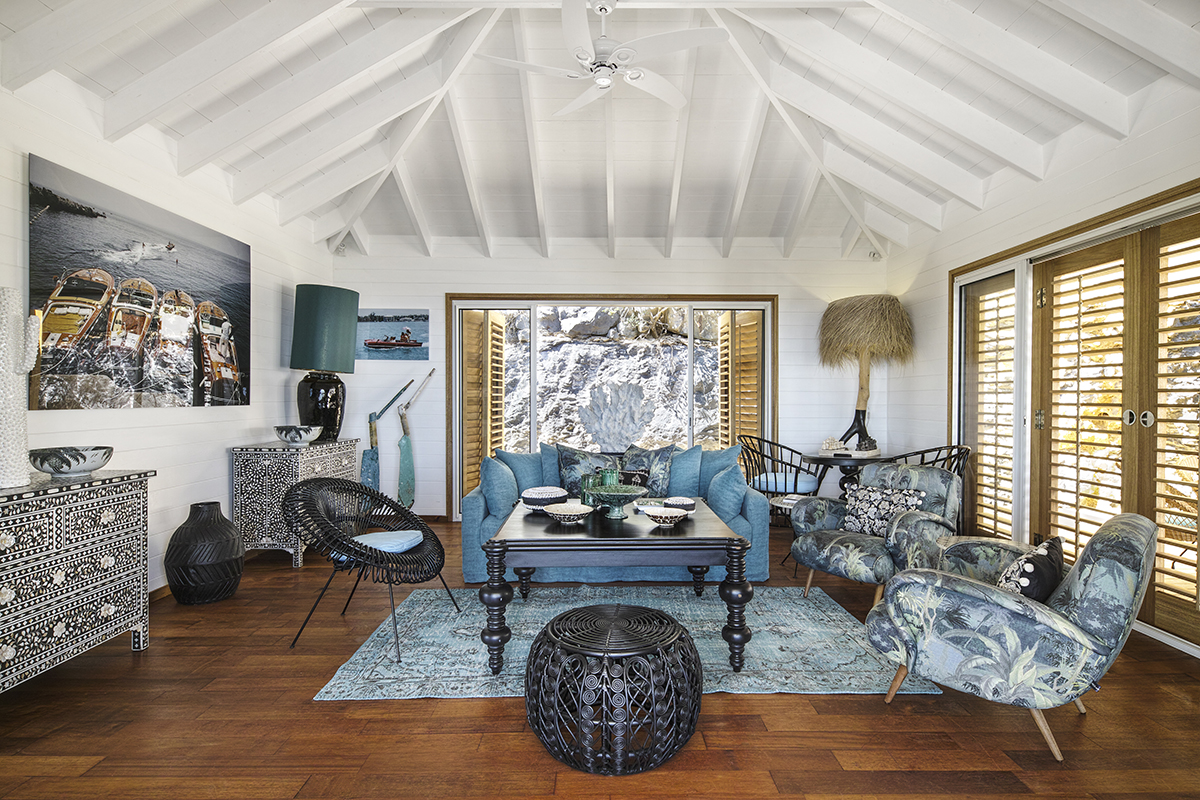
The elegantly bohemian living room of the Pool Suite at Villa Marie
Another day, I enjoyed a massage at the hotel listening to the chirping rainforest sounds, followed by a dinner at the hotel’s Restaurant Dolce Vita. The aubergine parmigiana and tiramisu were as good as you would find on the Amalfi coast, and the live music that plays every night was the perfect end to this alluring escape.
Find out more:
rosewoodhotels.com/le-guanahani
This article first appeared in the Autumn/Winter 2023/24 issue of LUX



